Singapore, a tropical island and futuristic city state, is the ideal introduction to Southeast Asia. It may be a small country but it has an interesting multicultural history, amazing food, and is packed with world-class attractions.
There’s so much to see and do in Singapore – I’ve visited Singapore many times and always find something new to explore (and eat!) So if your planning a trip to the Lion City, I’ve compiled a comprehensive guide on how to spend 3 – 5 days in Singapore.
This Singapore itinerary covers both the famous tourist attractions as well as giving you an insight into the diverse multicultural neighbourhoods, delicious cuisine, and tropical natural beauty of the island city.
From the futuristic skyline and unique attractions, to the rich history, shopping and culinary delights, Singapore is so much more than a layover – and it’s well worth exploring beyond the iconic sights to get to the heart of this fascinating city island state.
So don’t rush off to the neighboring countries – Singapore itself is packed with unique experiences waiting to be discovered!
Pin Me! 🙂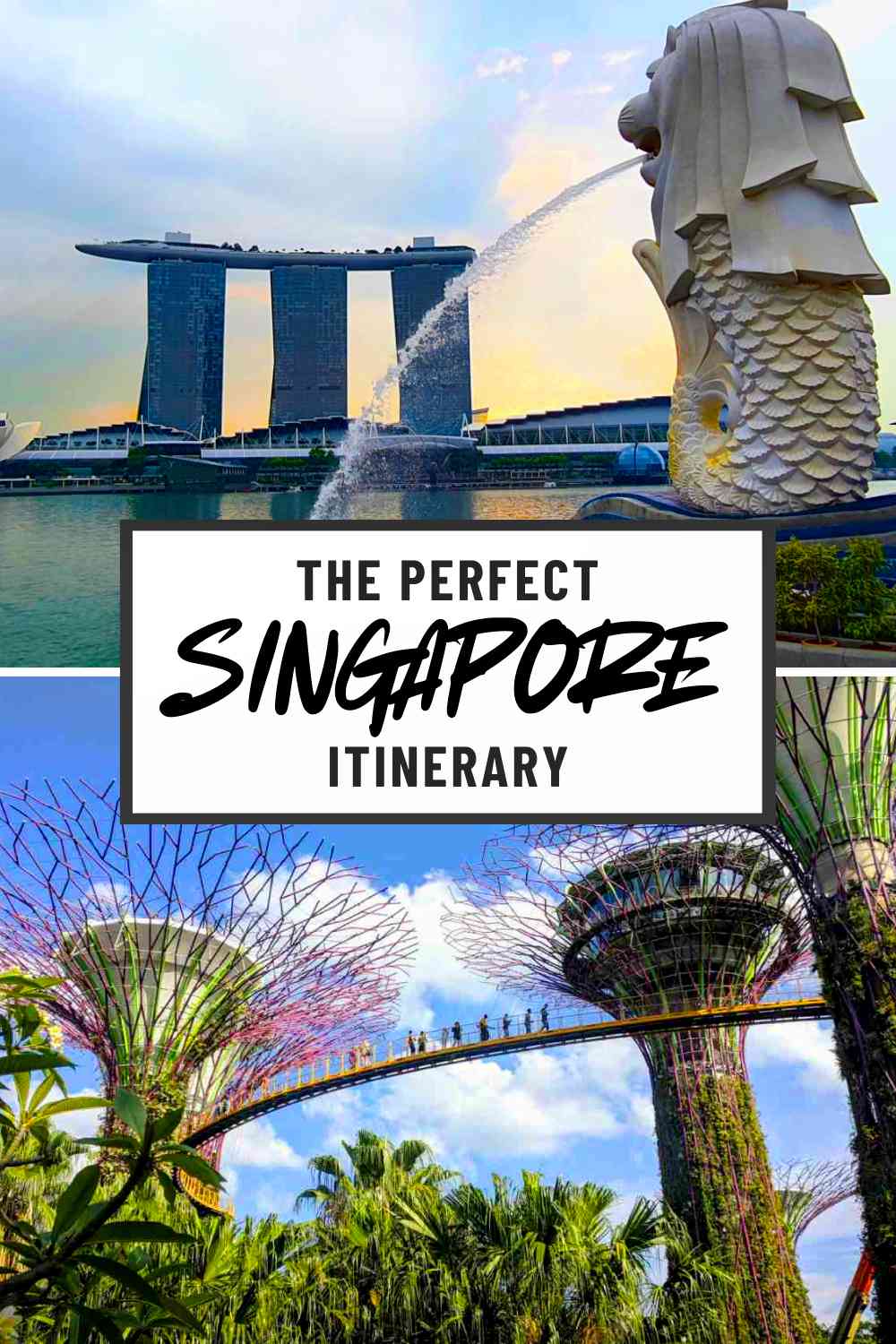
Tips For Planning Your Singapore Itinerary
Before you plan your itinerary for Singapore it’s good to consider the best time to visit, how to get there and get around, and where to stay and eat for the best experience. So I’ll cover all this first in this mini Singapore travel guide. If you already know this then click here to skip to the day by day itinerary.
How Long to Spend in Singapore
If you’re visiting Singapore for the first time, I’d recommend spending at least 3 days in Singapore to get a good mix of its iconic landmarks, vibrant neighborhoods and delicious food.
With 3 days in Singapore, you can visit the famous attractions like the Marina Bay Sands, Gardens by the Bay, Sentosa Island and Singapore Zoo, while also exploring the city’s diverse culture and food.
Many people just spend 3 days in Singapore, which is enough to see the main attractions and get a feel for the city but, if you can, I recommend planning to spend 4 or 5 days in Singapore – this will allow you to explore the rich, multicultural history and unique culture, visit the world class museums and experience Singapore’s natural beauty.
If you want to see everything this island city state has to offer, including off the beaten track hidden gems, then you’ll need to spend 1 week or 7 days in Singapore – if you use all my recommendations you can easily fill a 1 week Singapore itinerary.
If you are visiting on a layover, or can only spend 1 day in Singapore, I recommend booking this private Singapore day tour by car for the best experience. Private tours are customisable so you can only see what matters to you to make the most of your time.
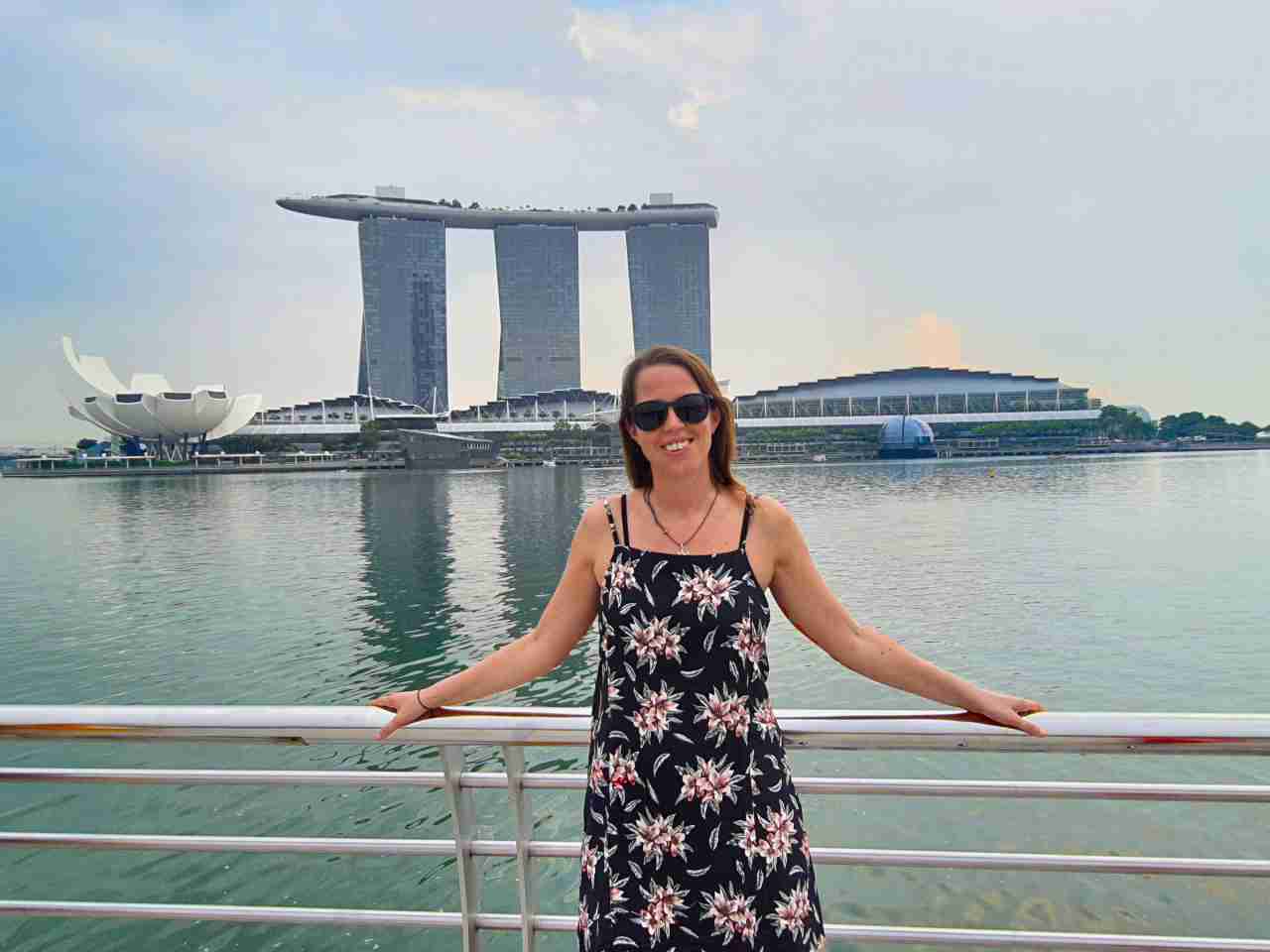
The Best Time to Visit Singapore
Singapore is a good idea any time of year! The city island state enjoys a tropical climate all year round, which means it’s warm and humid throughout the year with temperatures averaging between 25°C to 31°C (77°F to 88°F.)
You can visit Singapore at any time of year, although the best time to visit is typically during the dry season, from February to April, when the weather is a bit cooler so it’s more comfortable for exploring the city. This period sees slightly less humidity and rainfall so it’s perfect for outdoor activities like visiting the Gardens by the Bay or strolling along Orchard Road.
During the monsoon season (usually from November to January) the city experiences heavier rainfall and higher humidity. While the rain doesn’t last long, it can sometimes disrupt outdoor plans, so it’s good to pack accordingly.
That said, Singapore is a year-round destination with activities and attractions suited to any time of the year, so don’t let the weather deter you!
How to Get to Singapore
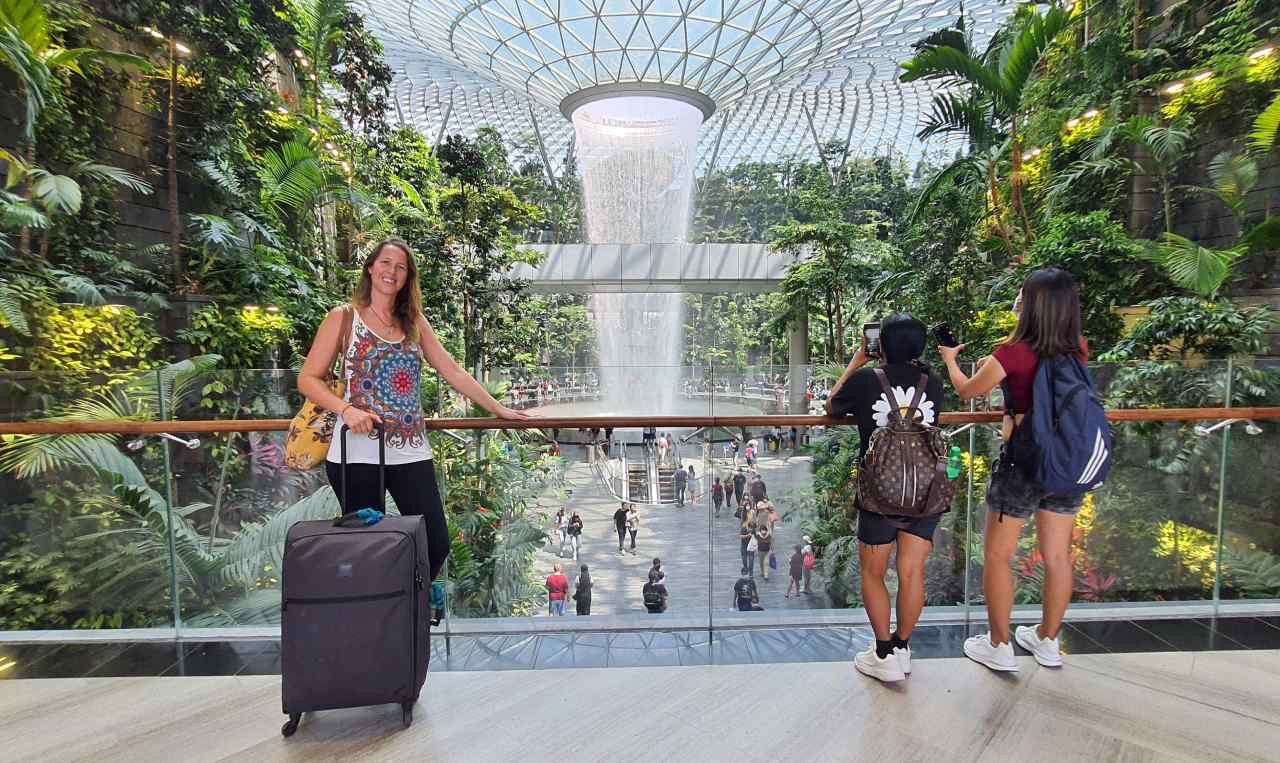
Getting to Singapore is easy as the airport is well connected to major cities worldwide and has excellent public transport links into the city.
Singapore Changi Airport (SIN), is consistently ranked as the best airport in the world and is the main gateway into the city with many international flights arriving here from all over the world. It’s one of the best hubs in the region so many travellers start their Southeast Asia adventures here.
If you’re flying into Singapore Airport, expect a smooth arrival process, as most nationalities enjoy visa-free entry for stays of up to 30 days. It’s always a good idea to check the latest entry requirements on the official Singapore government website before you travel in case something has changed.
Also be aware that now all travellers do need to fill out the Singapore arrival card online beforehand – it’s quick, easy and free to do so. Singapore customs are generally very friendly and polite!
Singapore Changi Airport is an attraction and destination upon itself. It’s like a miniature city with an autonomous monorail, lush gardens, art installations, rooftop pools, cinemas, shops and restaurants. Don’t miss The Jewel Changi, a stunning nature-themed entertainment complex linked to Terminal 1. At its centre is the Rain Vortex, the world’s tallest indoor waterfall, surrounded by the lush, multi-level Shiseido Forest Valley.
If you are traveling from nearby Southeast Asian countries like Malaysia, Indonesia and Thailand you can also reach Singapore by bus, train or boat. Comfortable, high quality buses and coaches connect Singapore and Malaysia, you can reach Johor Bahru in around 1 hour and the capital Kuala Lumpur in 5 – 6 hours. The best place to book bus and train tickets in Southeast Asia is on 12Go Asia.
Note that it can take some time to clear customs at the modern and efficient Malaysia-Singapore border control. Remember that Singapore is a very strict country when it comes to prohibited substances – even chewing gum is banned!
How to Get Around Singapore
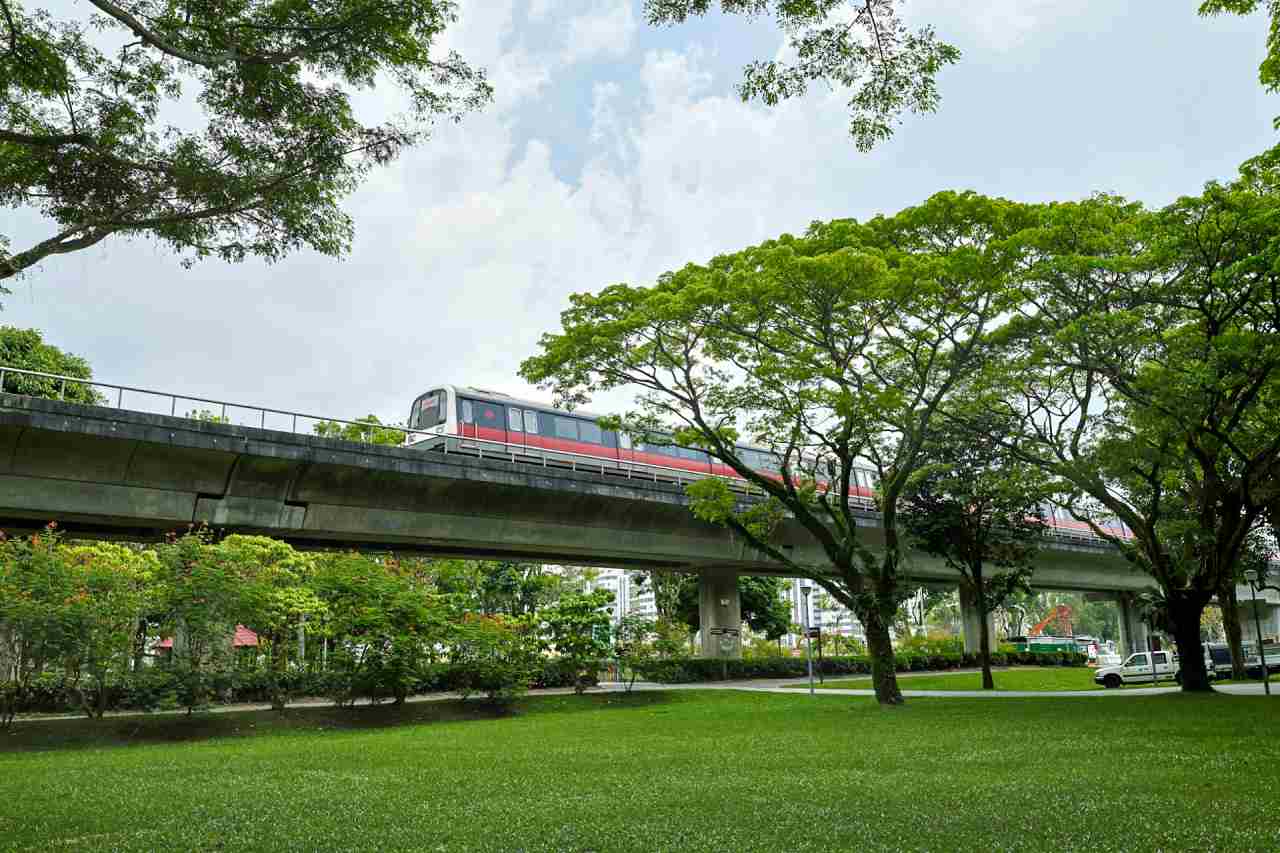
Getting around Singapore is a breeze thanks to its world-class public transportation system. The MRT (Mass Rapid Transit) is the quickest, easiest and most efficient way to travel around the city, connecting key areas like Changi Airport, Marina Bay, Chinatown and Orchard Road.
The airport is just a 20-minute taxi, a quick train, MRT, or air conditioned bus ride away from the city center – so getting to your accommodation from the airport is quick, easy, straightforward and inexpensive.
The MRT also zips around the entire island, enabling rapid access to the far Western, Northern and Eastern stretches of the city. The trains are punctual, clean, safe, and air-conditioned, making it an ideal mode of transport in Singapore’s warm climate.
Buses are also an excellent option with affordable prices and extensive routes throughout the city. They are safe, comfortable, and generally not overcrowded, apart from in rush hour.
For more information about Singapore’s public transport check out the Land Transport Authority website or download the MyTransport app. If you plan to use public transport a lot it might be worth buying a Singapore Tourist Pass for unlimited rides on the MRT and buses – you can get one at most MRT stations including the airport.
There is also a Hop On / Hop Off bus which is the easiest way to travel around the main tourist attractions on an open top tour bus with a commentary available in multiple languages.
Taxis are plentiful and safe, but during rush hours, you might experience longer waits. A convenient way to book taxis or private hire cars is through apps like Grab, Singapore’s version of Uber which is widely used in the city.
Note that there is a road congestion charge in Singapore, which results in a “peak period” taxi surcharge during certain times: 6-9:30am and 5pm-midnight daily. You can also rent a car or hire a driver. Singapore is a small country and it only takes 1 hour to drive from one end to another.
Cycling is another popular way to explore the city and there are dedicated bike paths and bike-sharing services available, especially around the Marina Bay area and East Coast Park. You can also join a cycling tour for a fun way to explore the city with a friendly local guide on a more intimate level.
Walking is also a great way to discover Singapore’s neighborhoods, with sidewalks and pedestrian-friendly streets and parks to explore at your own pace. The covered paths mean that you can walk around many parts of Singapore even in the blazing sun or tropical rain comfortably. There are also many excellent walking tours to choose from which are a great way to really get know a destination.
Singapore is known for being a safe city due to the strict laws that govern it and it’s particularly safe for women and solo female travellers, even on club streets, and at night – another reason why it makes a great introduction to Asia.
It’s also a digital-driven society where contactless payments are common and cash may not be necessary for many transactions. You can get a local sim card, use a e-sim or enjoy free WiFi in most malls and public spaces in the city.
Attractions, Activities and Tours
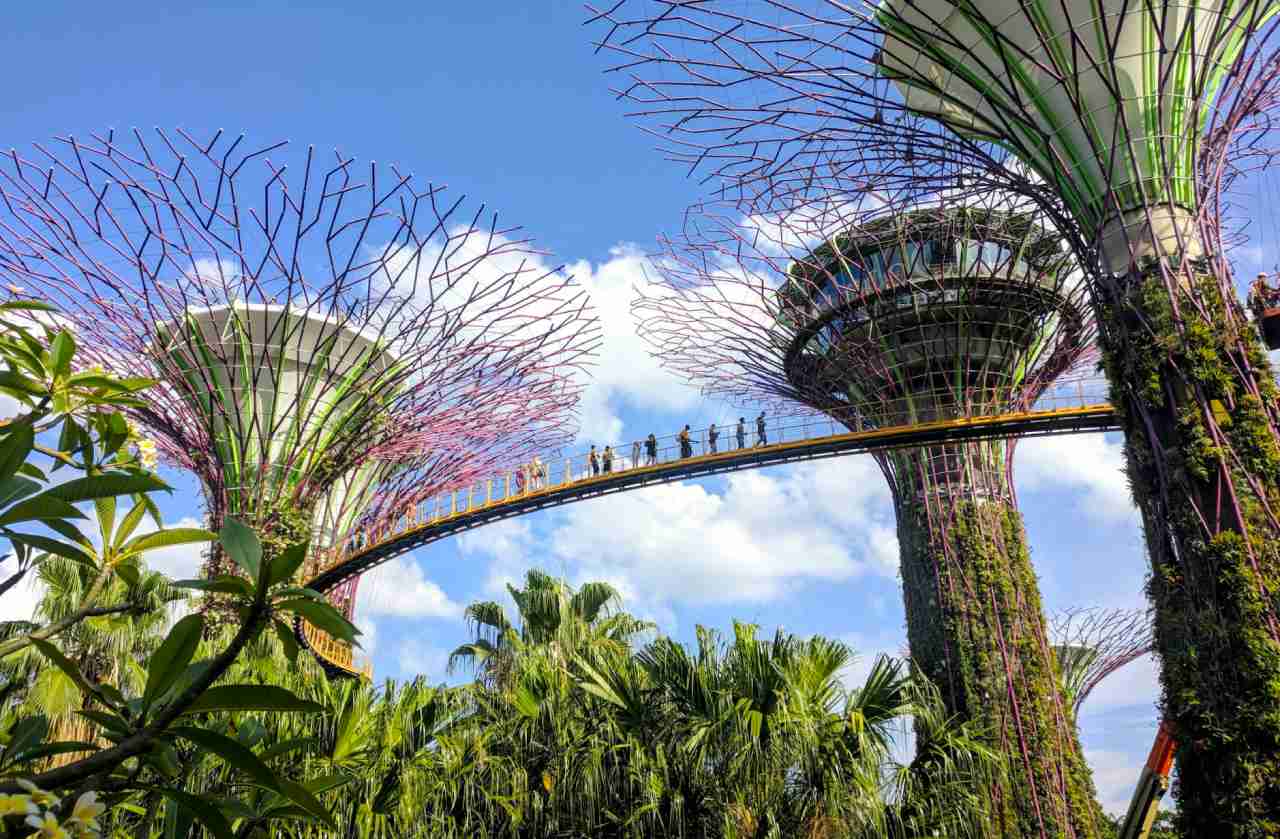
Guided Tours of Singapore
It’s extraordinarily safe, comfortable, and cheap to travel by public transport in Singapore, but if you want a deeper insight then taking a tour with a local guide makes the experience more meaningful and will likely show you things that you wouldn’t have found on your own.
Local travel agents sell tickets and tours but I like to be able to book in my itinerary before I go and read the reviews first so that I know I’m going to get a good experience. The best place to do this is on Viator, Get Your Guide and Klook.
There’s plenty of guided tours that make exploring Singapore fun, convenient and stress free. The top guided tours in Singapore include:
Attraction Tickets
It’s also worth noting that some of Singapore’s attractions and activities are very popular and have limited space, so I recommend booking tickets for these in advance to skip the queue and avoid disappointment and wasting time waiting in line.
Tickets worth booking in advance include:
Klook is a local company that is very popular in Asia and often has slightly cheaper prices. I tend to use Klook to book attraction tickets and city passes but prefer the guided tours on Viator and Get Your Guide.
Klook also offer a Singapore Pass which can save you money (up to 44% on individual ticket prices) if you plan to visit multiple attractions. Choose a pass that covers the number of attractions you want to visit (note that Universal Studios Singapore is a premium add on) and then book in your dates once you’re sure of your itinerary. You’ll need to activate your pass within 30 days by reserving your first activity and then you’ve got 30 days to book in the remaining activities.
Where to Stay in Singapore
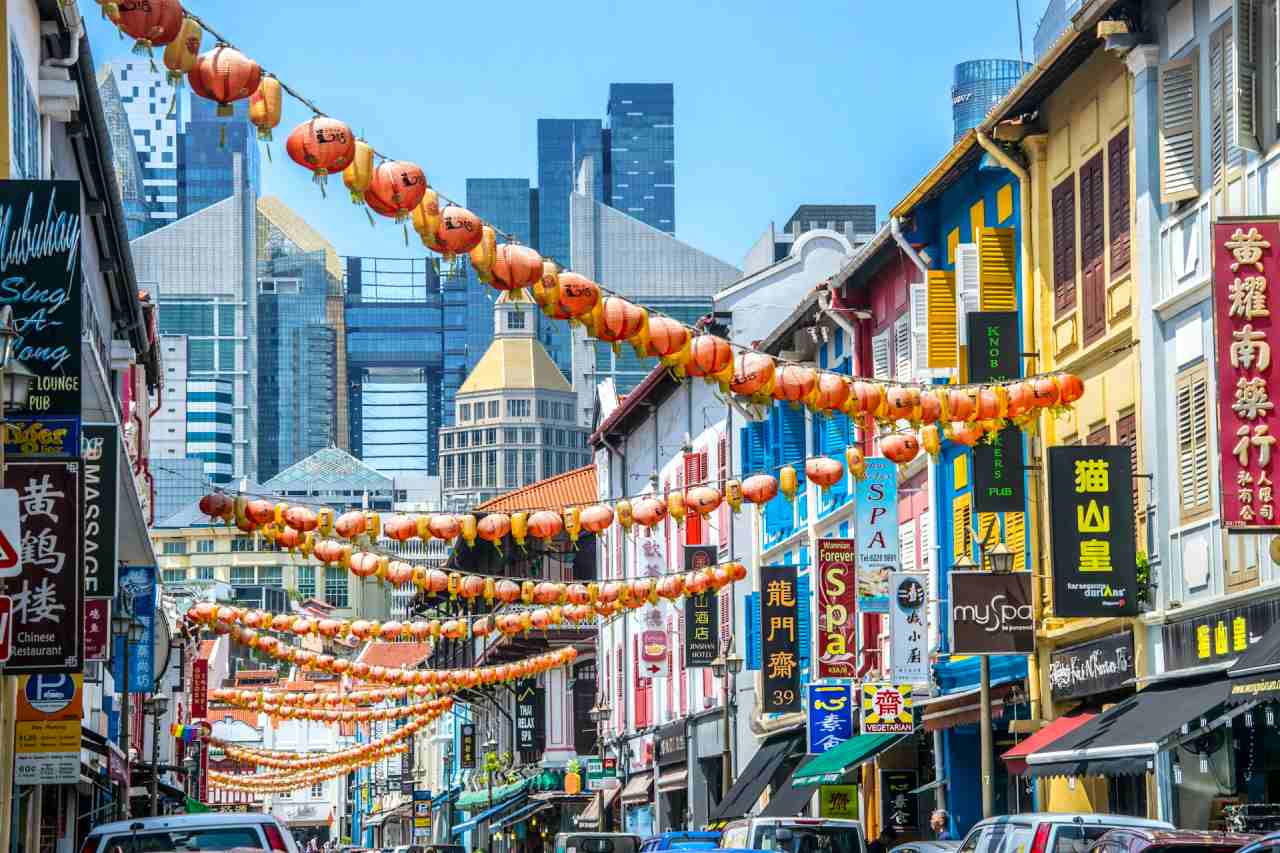
Singapore is a small island with excellent public transportation so, wherever you choose to stay in Singapore, you shouldn’t be too far away from anything. That said, if you are here for a short trip I recommend staying central to make the most of your time.
The best place to stay in Singapore for your first time is in the downtown areas like Marina Bay and the Civic District or CBD. This is where you’ll find iconic modern architecture and stunning views as well as historic colonial buildings that have been turned into heritage hotels and museums. When you stay in this area you’ll also be within walking distance to the main attractions like Gardens by the Bay.
Other good options are nearby Chinatown and Clarke Quay where you’ll be able to find more affordable accommodation like budget hotels and backpacker hostels as well as budget friendly eating options in the food courts and hawker centers. If you stay in these areas, you’ll still be close to Marina Bay but you can also explore the temples and cultural attractions of Chinatown or enjoy the nightlife on the riverside at Clarke Quay.
A little further out, but still well connected, is Orchard Road where you can find not just shopping malls but also some good deals of hotels. Also consider Bugis, Kampong Glam and Little India for colourful, well connected areas with affordable hotels, unique culture and tasty cuisine.
Singapore Accommodation Options
Singapore has plenty of accommodation options, from luxury hotels to backpacker hostels. However, accommodation in Singapore isn’t cheap. As the city is very densely populated real estate is at a premium, so even room sharing or renting a tiny apartment on AirBnB is costly compared to other nearby countries in Southeast Asia.
If you’re looking for an unforgettable experience you won’t be disappointed as Singapore is full of luxurious, world class hotels, with stunning views and impeccable service but if you’re on a budget your choices are more limited.
It can be challenging to find good, centrally located, low coast accommodation in Singapore but even budget hotels and hostels should be sufficiently safe and comfortable, many hostels have sleeping pods which offer more privacy than your traditional dorm room and is your best bet for accommodation under $100 a night.
The Best Hotels in Singapore
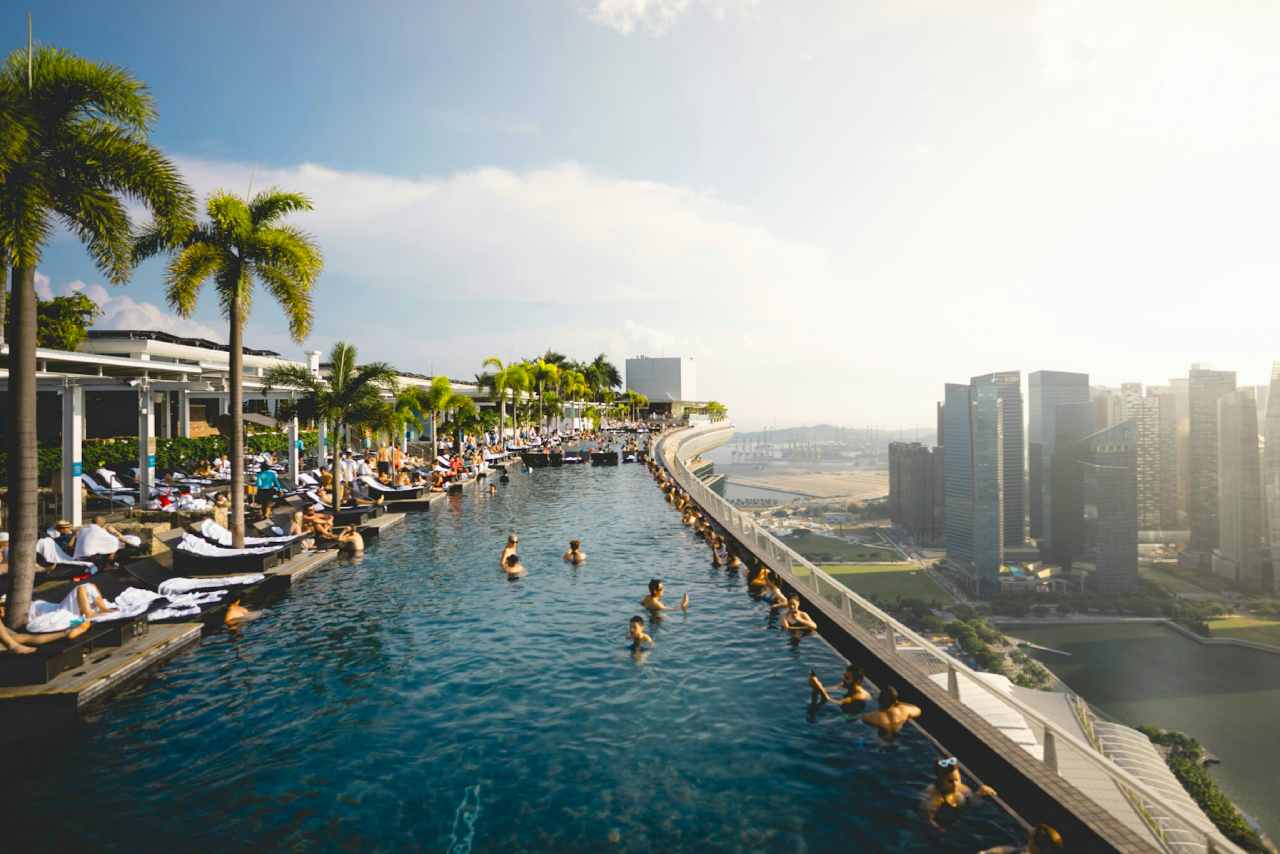
To save you trawling through the hundred of options, here’s some of my recommendations for the best hotels in Singapore for all budgets.
Luxury
- Marina Bay Sands Hotel – The world famous Marina Bay Sands Hotel is shaped like a boat and towers above the city. It’s iconic rooftop pool boasts the best views in the city and is only open to hotel guests – this is hands down one of the best places to stay in Singapore if you can afford it!
- The Raffles Hotel – Staying in this legendary historic heritage hotel established in the late 1800s is like being immersed in a piece of history. Make sure you try a Singapore Sling – the famous cocktail was created at the Raffles Hotel!
- Mandarin Oriental Singapore – Another fabulous 5 star hotel in Marina Bay offering incredible views and top notch facilities for less.
Mid Range
- Ann Siang House – An elegantly restored heritage shop house in Chinatown close to temples, cultural attractions and food courts.
- Holiday Inn Express Clarke Quay – Great value 4 star hotel with a 24 hour rooftop pool and fitness center near Clarke Quay MRT – some rooms even have views of Marina Bay Sands.
- LYF Funan – Slick, modern hotel with compact but well designed rooms and a great, central location near City Hall MRT.
- The Sultan – A collection of 10 beautifully restored boutique heritage shophouses near the Sultan Mosque in Kampong Glam.
Budget
- Wink Hostel – Smart and clean capsule/ pod style hostel in 4 locations, including central Chinatown location
- Dream Chaser Boutique – Offers a variety of budget friendly options from capsule style dormitory rooms to private ensuite rooms in the heart of Kampong Glam.
The best place to book hotels in Singapore is on Booking.com or Agoda has some good deals but be aware that the prices on Agoda do not include tax. If you’re looking for hostels then check out Hostel World.
Where and What to Eat in Singapore
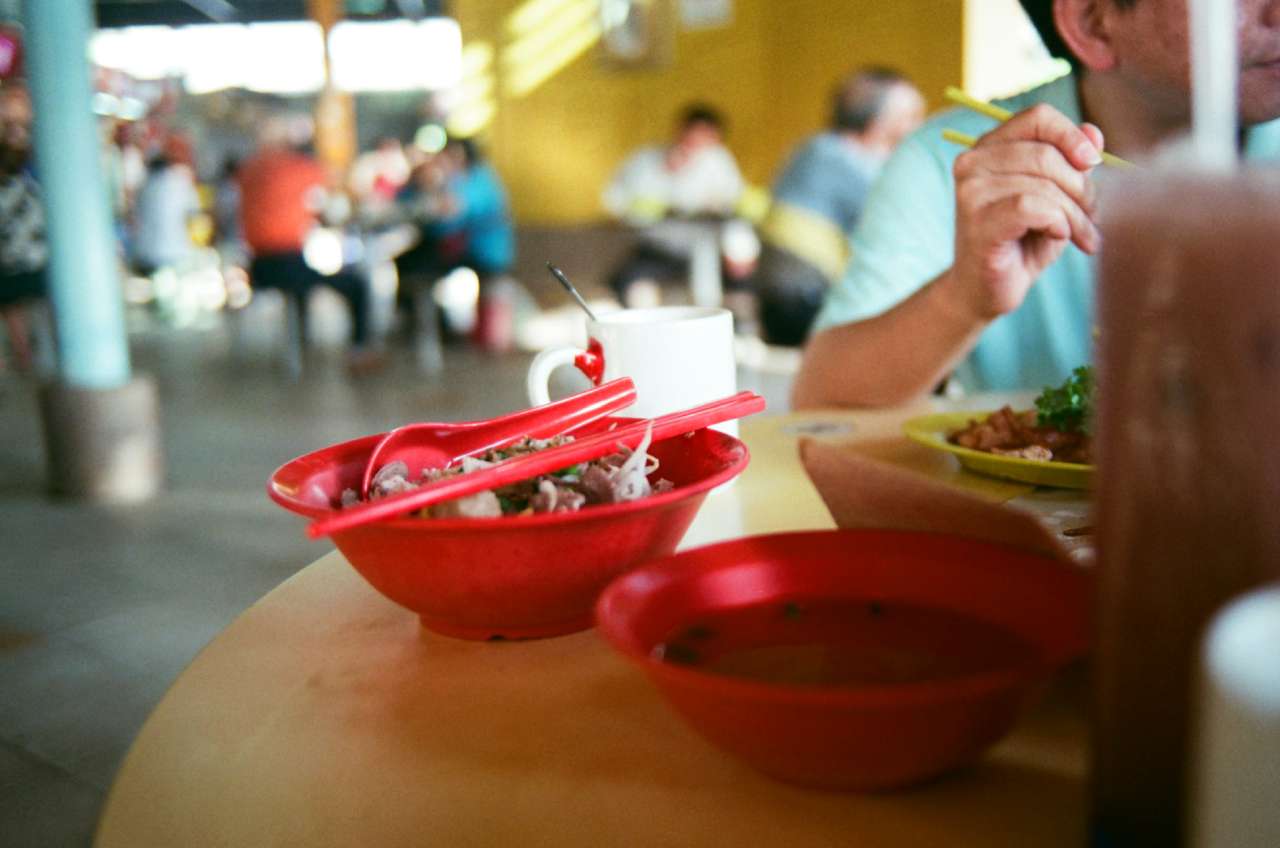
Singapore is a foodies paradise and is widely revered as having some of the best food in the world, not just because of fancy fine dining restaurants (though there’s plenty of that) but because of its rich multicultural food heritage where Malay, Chinese, Indian, Peranakan, and Western influences all mix together creating a really unique cuisine.
The best place to try Singaporean food is in the hawker centers, food courts and traditional kopitiams (coffee shops.) Not only are these the most affordable places to eat in Singapore – they are also an essential cultural experience.
Some of the best hawker centers in Singapore include:
- Maxwell Food Centre – Famous hawker centre in Chinatown to try chicken rice and classic hawker fare
- Lau Pa Sat – Iconic colonial-style food court with satay street vibes at night in the CBD.
- Satay by the Bay – Open-air waterfront spot for grilled seafood and satay near Gardens by the Bay.
- Chinatown Complex Food Centre – Singapore’s largest hawker centre, home to Michelin-starred soya sauce chicken.
- Old Airport Road Food Centre – A local favourite with top-notch Hokkien mee and lor mee stalls.
- Tekka Centre – Go-to spot in Little India for roti prata, biryani, and colourful market vibes.
- Newton Food Centre – Lively and tourist-friendly night spot for BBQ chicken wings, seafood, satay, and local beer.
- Market Street Hawker Centre – A large, modern hawker center located inside the CapitaSpring building near boat quay and Raffles Place MRT. It’s popular with office workers and a great spot for lunch.
- Funan & Food Republic (malls) – Comfortable, air-conditioned food courts with local and pan Asian dishes.
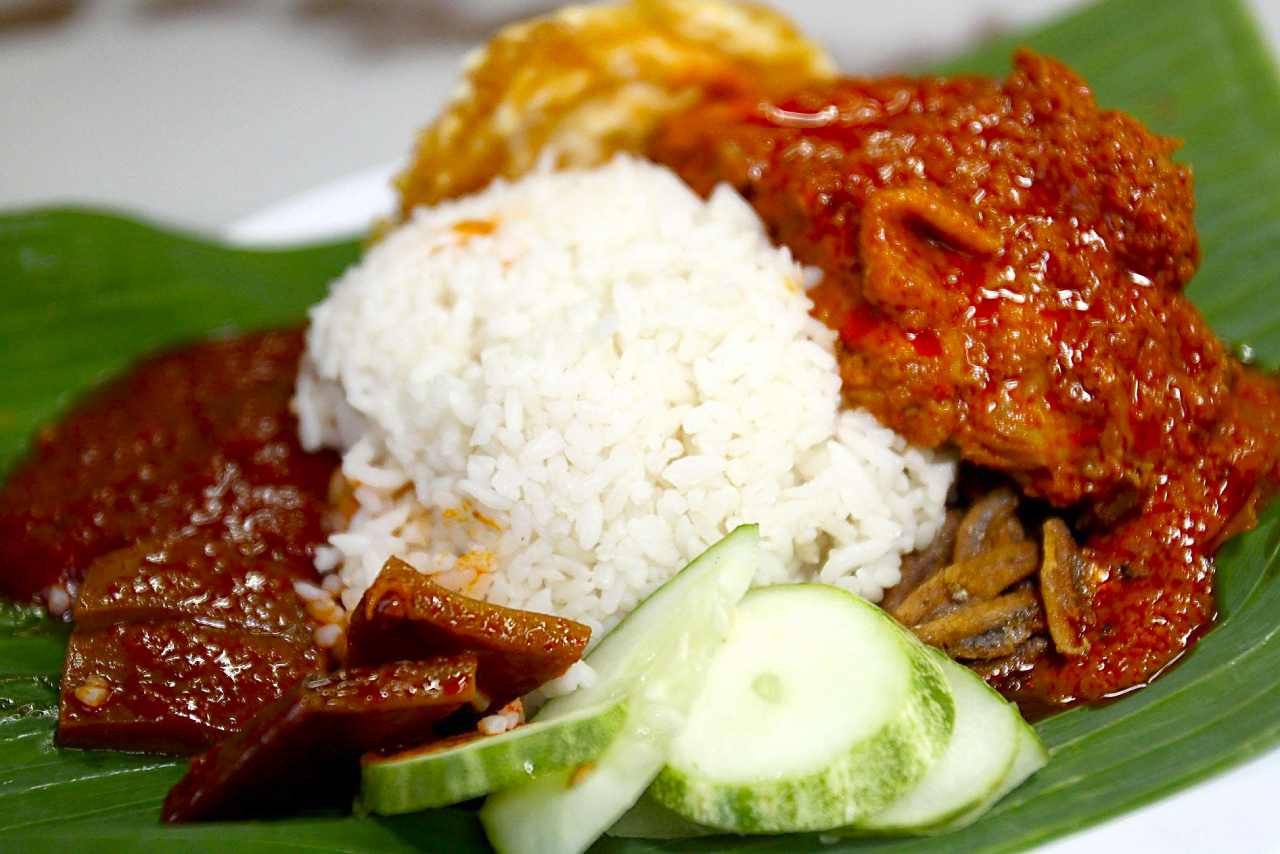
Another thing that makes hawker centres so good is the huge array of dishes to choose from. Some famous dishes you must try when in Singapore include:
- Hainanese Chicken Rice – Tender poached chicken with fragrant rice and a trio of dipping sauces, considered Singapore’s national dish.
- Laksa (Katong-style) – A rich, spicy coconut noodle soup with prawns and cockles, known for its creamy broth and short noodles.
- Chilli Crab – Sweet, spicy, and messy crab dish in a thick tomato-chilli sauce, best eaten with your hands and mantou buns.
- Satay – Charcoal-grilled meat skewers served with peanut sauce, rice cakes, and cucumber slices.
- Roti Prata – Flaky Indian flatbread served with curry, perfect for breakfast or late-night snacking.
- Nasi Lemak – Coconut rice with fried chicken, sambal, anchovies, egg, and peanuts, a fragrant and spicy Malay favourite.
- Hokkien Mee – Stir-fried noodles in a prawn and pork broth, often served with sambal and a squeeze of lime.
- Carrot Cake (Chai Tow Kway) – Savoury stir-fried radish cake with egg and garlic, available in white or black soy sauce versions.
- Nonya Kueh – Colourful Peranakan sweets made with coconut, pandan, and rice flour, chewy and aromatic.
- Local Drinks (Kopi, Teh, Milo Dinosaur) – Don’t miss local-style coffee or tea, or sweet treats like Milo Dinosaur and sugarcane juice.
Food hygiene in Singapore is generally very good. To find the best food just look for the long queue of locals lining up or if you don’t want to get overwhelmed by choice you can even join a food tour.
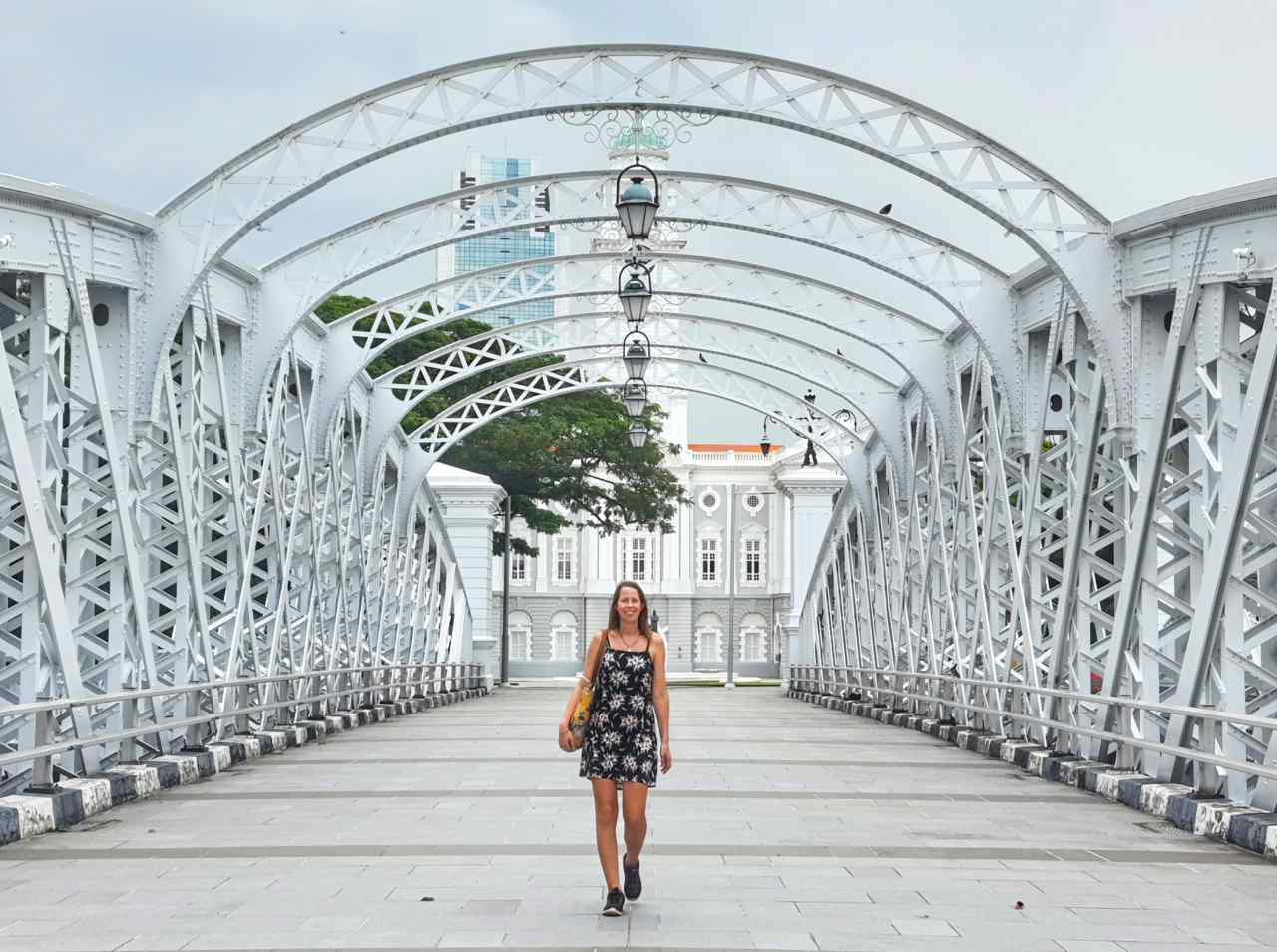
The Perfect 3 – 5 Day Itinerary For Singapore
Here’s how I recommend spending each day in Singapore – carry on reading for a detailed day-by-day itinerary.
- Day 1 – Historic Singapore and Modern Marina Bay
- Day 2 – Sentosa Island and Universal Studios
- Day 3 – Singapore Zoo and Night Safari
- Day 4 – Shopping, Museums and Parks
- Day 5 – Off Beat Adventures and Hidden Gems
Day 1: Historic Singapore and Modern Marina Bay
Morning – Explore Old Singapore (Little India, Chinatown, Kampong Glam)
Singapore has a really interesting and diverse history, so the best way start your trip to Singapore and to understand this unique city’s history is on this excellent walking tour of Singapore.
On this interested guided tour you’ll learn about the melting pot of cultures that created Singapore and will visit some of the most colourful ethnic neighbourhoods – Chinatown, Little India and Kampong Glam.
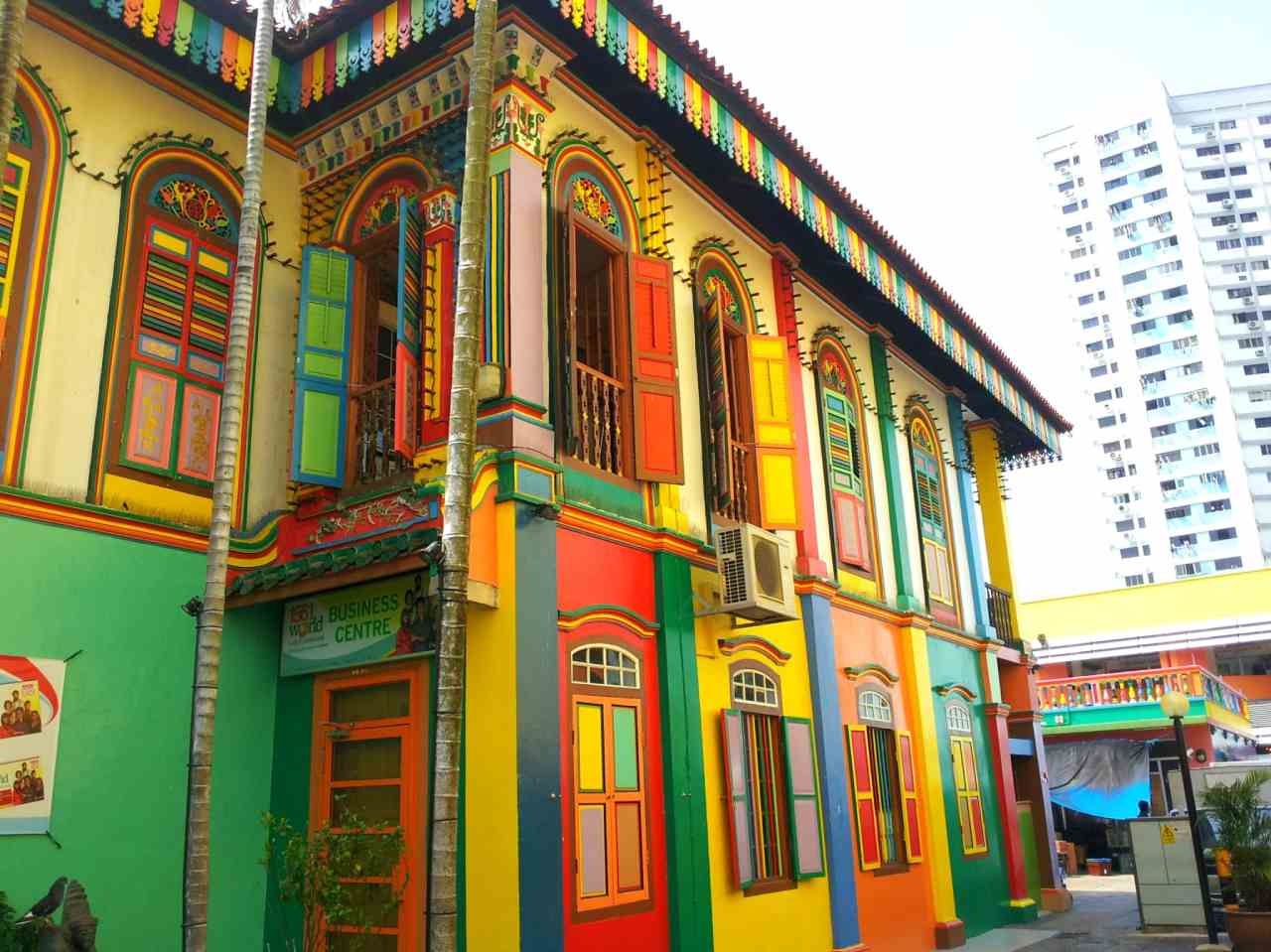
You’ll start by exploring Little India, a vibrant cultural district that developed in the 19th century, initially as a residential area for Indian immigrants who came to Singapore as laborers, traders, and soldiers during British colonial rule.
Today it’s home to Hindu temples, authentic Indian restaurants and shops, and colorful houses and street murals. As well as learning about the history you’ll visit the Sri Veeramakaliamman Temple and see colourful street art and brightly painted shophouses like Tan Teng Niah’s house, the only surviving Chinese villa in this neighborhood.
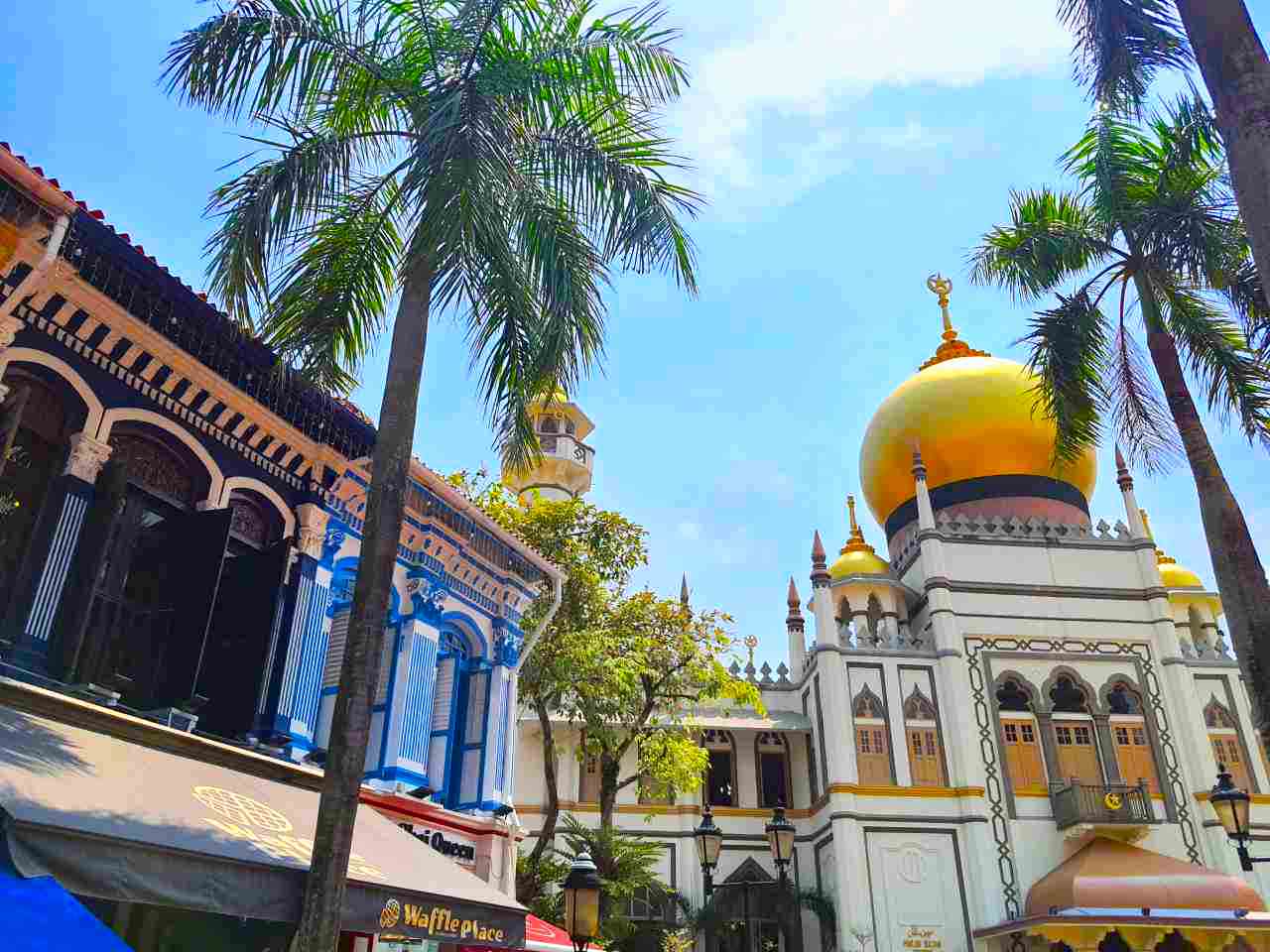
Next you’ll visit Kampong Glam, known as the Arab or Muslim Quarter, where you’ll see a mix of Malay, Arab, and Bugis influences and the golden domed Sultan Mosque – a famous historical landmark that dates back to 1824.
Wander along Arab Street and Haji Lane – It’s a lively and safe area to explore with street art and colourful historic shophouses home to traditional textile and carpet stores, authentic middle eastern restaurants, trendy cafes and quirky boutiques.
Did you known Singapore used to be part of Malaysia? If you want to know more, the Malay Heritage Centre in Kampong Glam provides insight into the history and culture of the Malay community in Singapore.
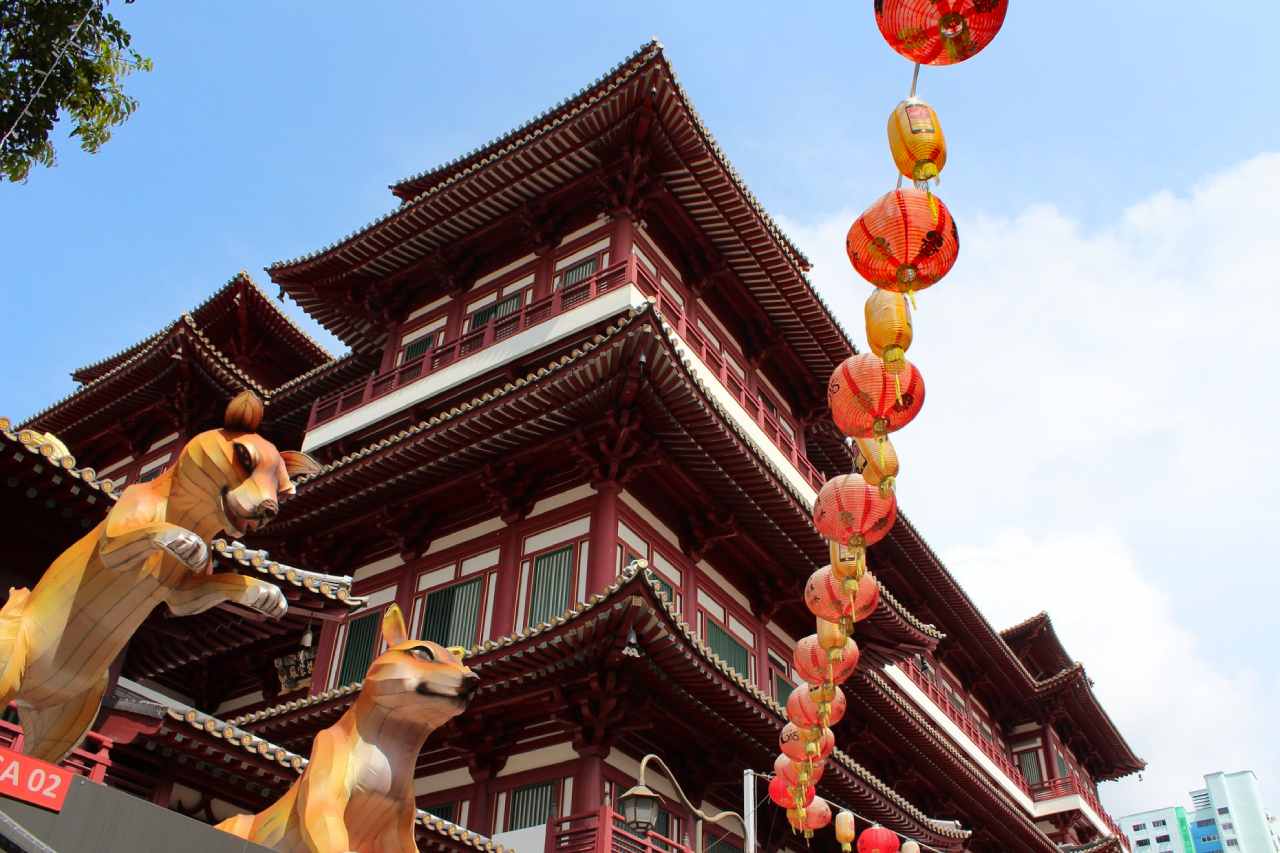
Finally you’ll explore Chinatown, another lively culturally significant area with historic buildings, temples, shops and markets that showcase the nation’s rich Chinese heritage. Wander along Pagoda Street and visit the Chinatown Heritage Centre for a glimpse into how the Chinese settlers lived.
Don’t miss the Buddha Tooth Relic Temple, which houses a sacred tooth relic of the Buddha, as well as a museum, cultural exhibits, and a rooftop garden, and the colourful and atmospheric Thian Hock Keng Temple.
You’ll also see the Sri Mariamman Temple, Singapore’s oldest Hindu temple dating back to 1827, next to a historic mosque, in Chinatown – this is how multicultural Singapore is!
In between these historic Chinese and Hindu temples, you’ll pass through laneways, shops and markets, soaking up the colourful and aromatic heritage of Singapore’s diverse ethnic groups that made it the cosmopolitan city it is today. It’s the perfect introduction to Singapore!
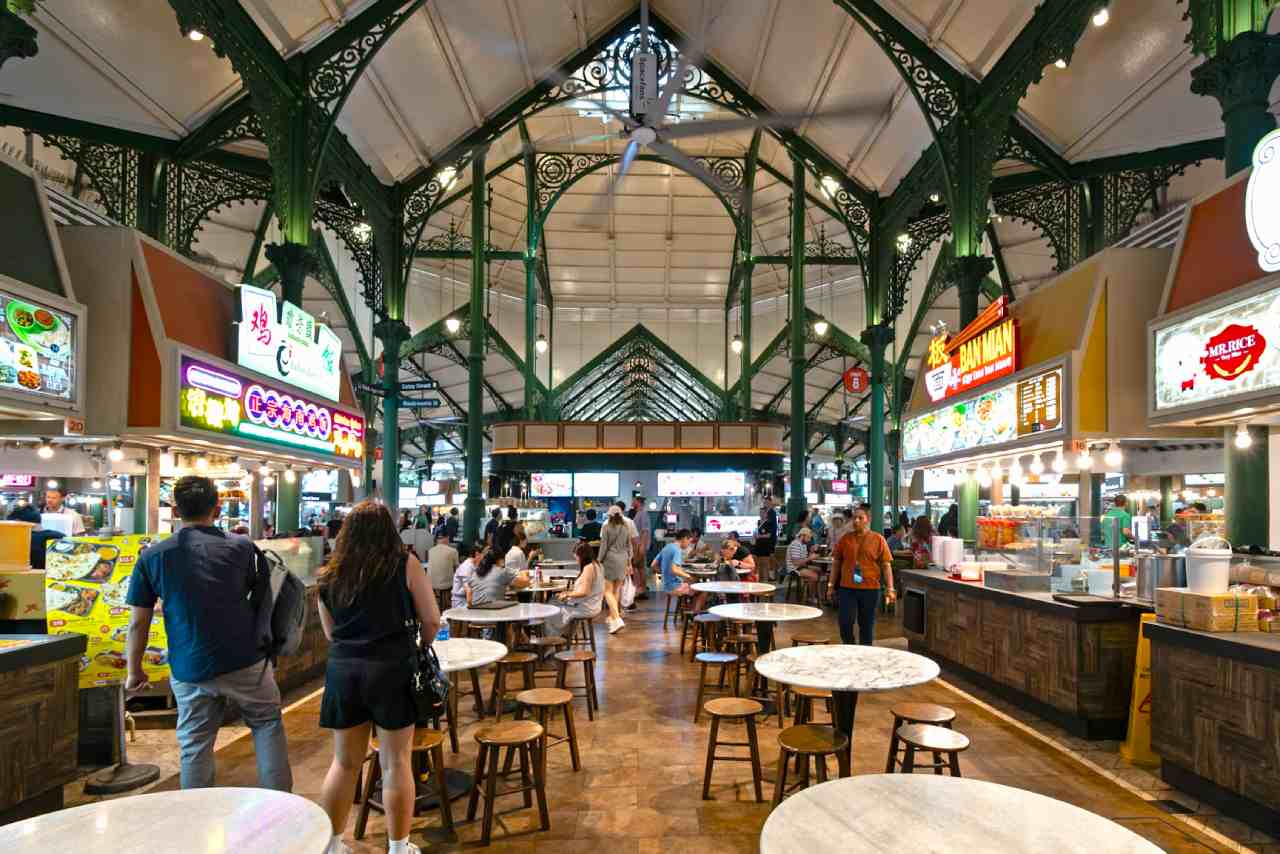
The walking tour finishes in Chinatown so, for lunch, why not explore some of the popular food markets and hawker centres for afforable and authentic local dishes. The local hawker markets are the most affordable places to eat in the city with numerous food stalls offering a diverse variety of local dishes as well as international cuisines.
One of the best hawker centres is Maxwell Food Centre where you’ll find some of the best street food in the city. It’s open from 8am – 2am at night. Popular local dishes to try include world-famous Hainanese Chicken Rice, dim sum, chili crab, satay with peanut sauce (chicken, beef, mutton and veg options available), delicious fried kuay teow noodles, and just about everything else to do with Chinese, Malay, Indian and Indonesian flavours. Western plates and vegan options are frequently available.
You can wander around the market until a dish catches your attention, or look for popular stalls with a long queue of locals to find the best dishes. Food hygiene in Singapore is much better than in other countries in Asia but if you’d like a local guide to help you find the best dishes and provide an insight into the city’s street food scene this Chinatown food tour is a popular option and includes several tastings.
You could also visit the Singapore City Gallery next door to Maxwell Food Centre if you’re interested in learning more about the city’s rapid development.
Afternoon – Merlion Park and Gardens by the Bay
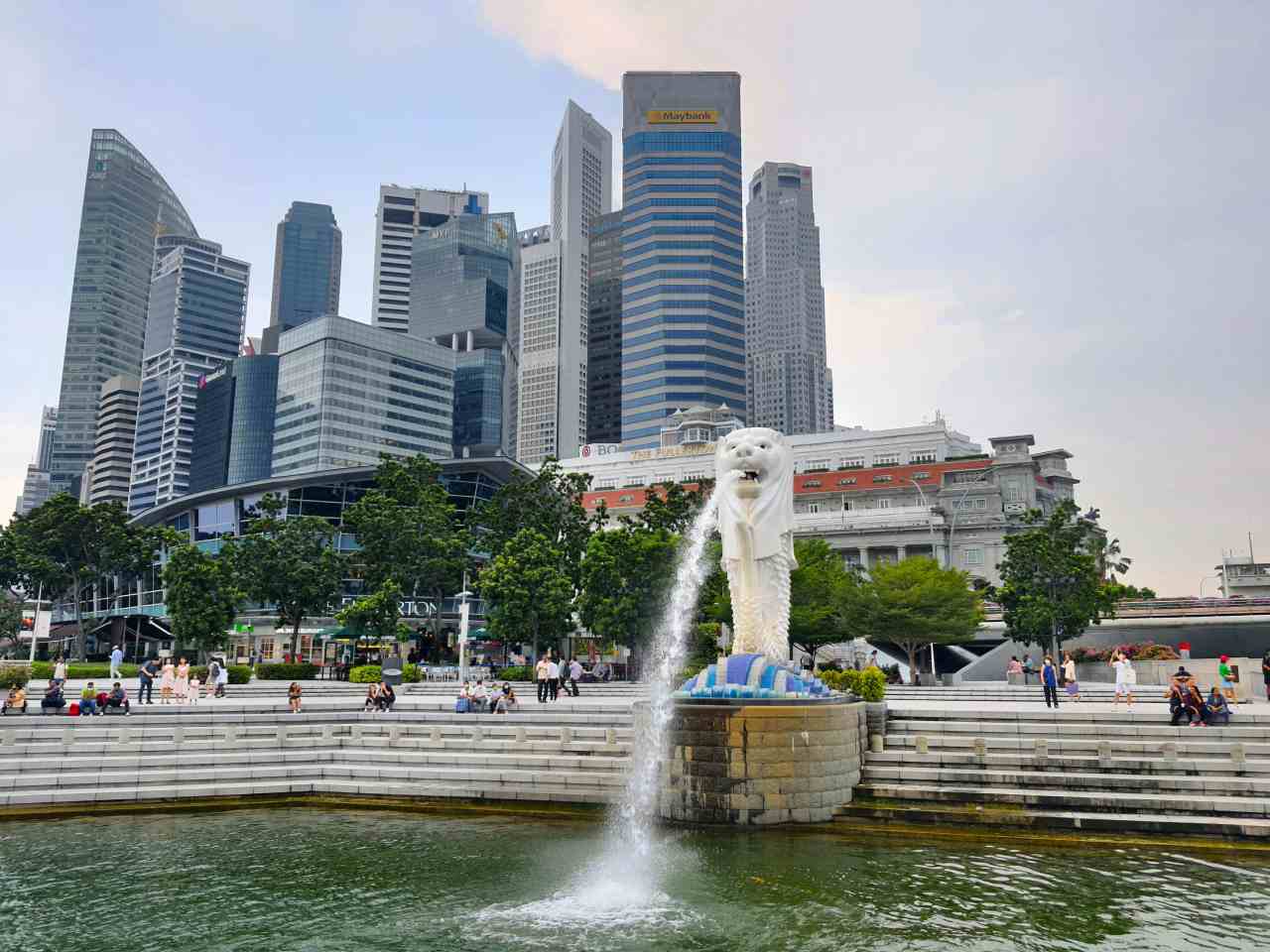
Walk off lunch via one of Singapore’s most iconic landmarks: the Merlion. This nearly-9-metre tall statue has the head of a lion atop a giant fish body and spouts water against a backdrop of towering skyscrapers so it’s an iconic photo spot.
Did you know that the name of Singapore – Singapura – means Lion City? Legend has it that a 13th century Sultan, who visited the island, spotted what he believed was a lion – but was probably a tiger. Only the zoo has lions but Merlion still makes a cool city mascot!
If you’d like to see the city from above, a twenty minute walk along the Esplanade from Merlion will take you to the Singapore Flyer – the world’s largest observation wheel boasting air conditioned glass cabins (SGD $40).
Alternatively, cross over the futuristic Helix Bridge (from which you’ll get great views of Marina Bay Sands) and visit the ArtScience Museum, an innovative, interactive space at the crossroads of arts, science and technology. The unique lotus flower-style architecture is propped up by ten giant “fingers” that intersect at the middle, and enable plentiful natural light.
For the ticket price of SGD $30 you are granted access to 21 spaces across 5000 sqm, with exhibits including works from legendary artists like da Vinci, van Gogh, Warhol and Dali. There is a plethora of VR experiences and a cinema.
Whichever attraction you choose make sure you allow time in your Singapore itinerary for the stunning Gardens by the Bay – one of the city’s most iconic attractions. This vast 100-hectare expanse of greenery, built upon reclaimed land by Marina Bay, combines nature, art, and technology into a unique, futuristic and awe inspiring experience.
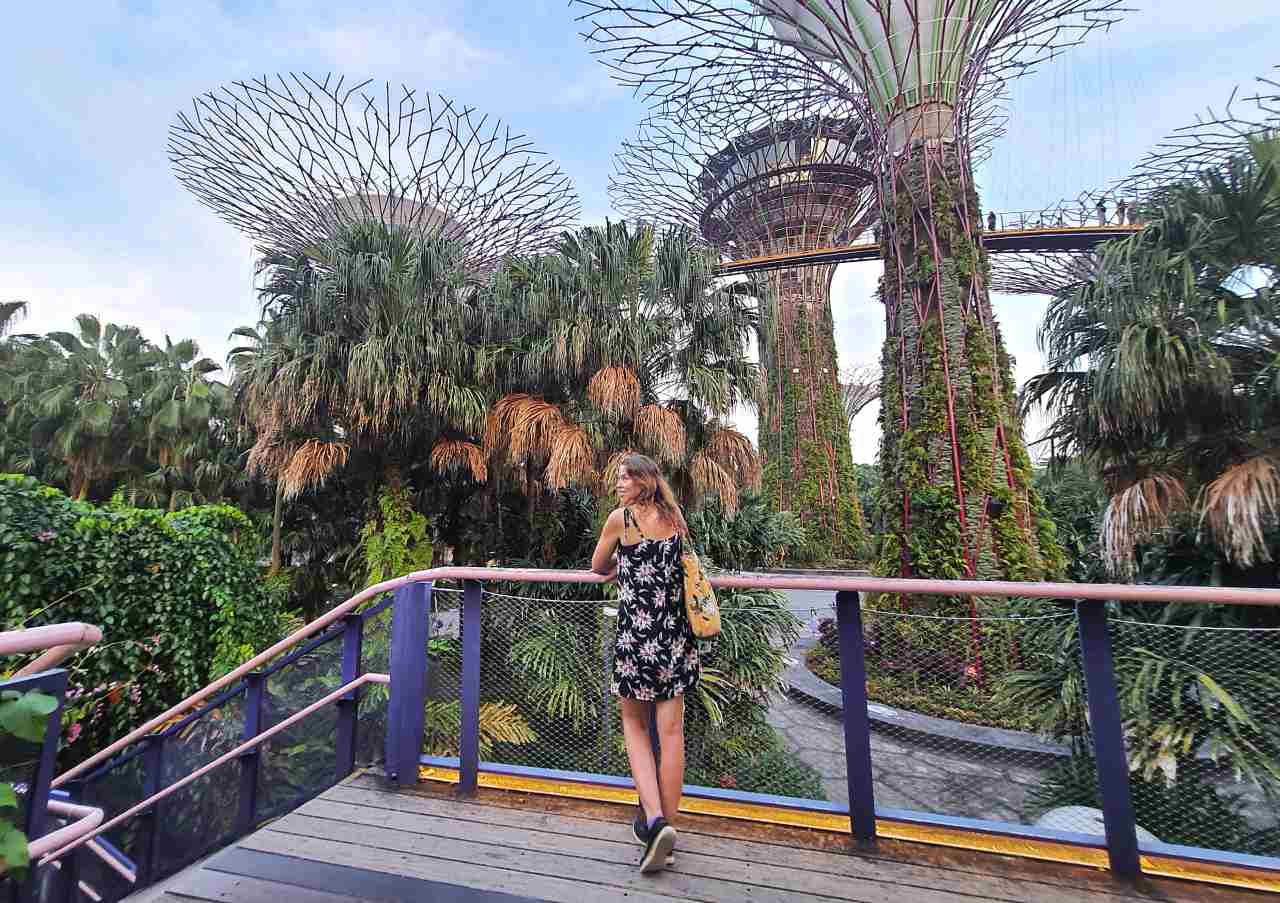
There’s a lot to see at Gardens by the Bay. The Supertrees are perhaps the most recognizable feature – these huge vertical man-made trees are covered with thousands of plants, including orchids, ferns, and bromeliads. They are connected by the OCBC Skyway, a 128-meter-long aerial walkway that offers stunning views of the Marina Bay skyline. They are especially mesmerizing when illuminated at night.
Then there’s the Flower Dome – the world’s largest glass greenhouse which contains a huge variety of plants and flowers from different regions, including the Mediterranean, South Africa, and Australia. The temperature is kept cool, mimicking a spring-like climate, and is a pleasant escape from Singapore’s heat.
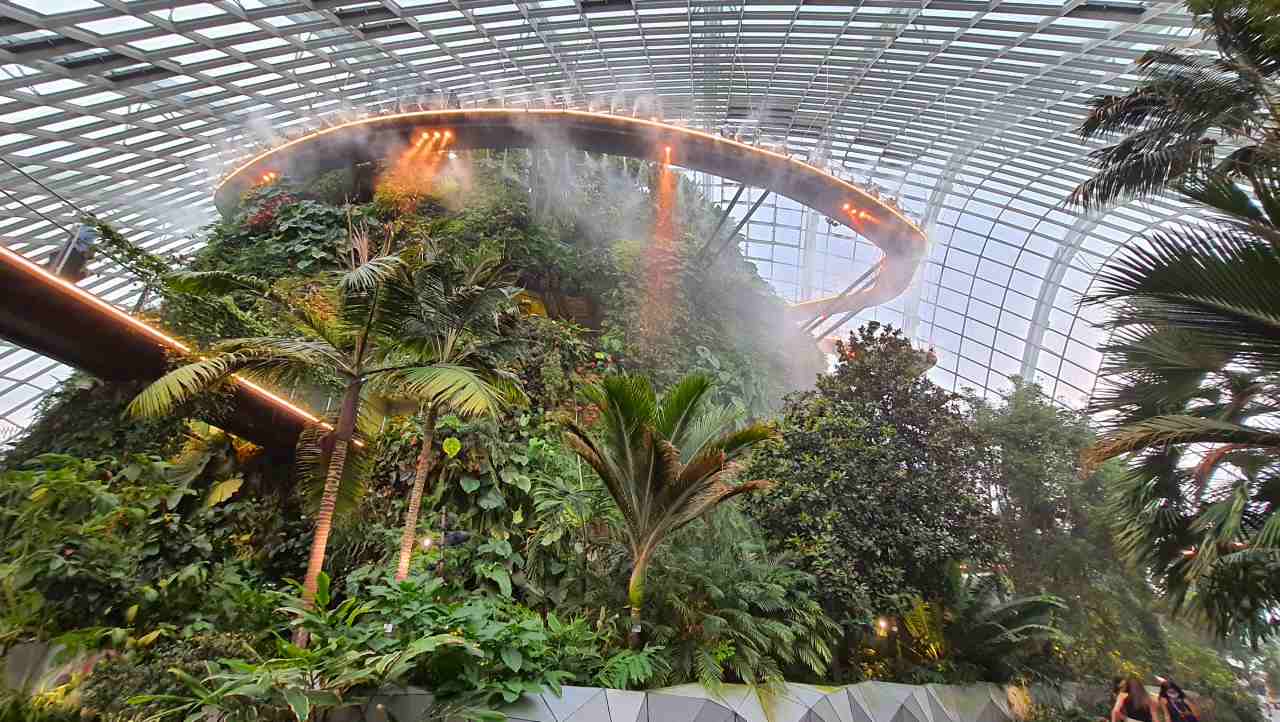
The Cloud Forest is the other must-see conservatory with a impressive 35 meter tall indoor waterfall and a misty cool-moist climate like the tropical highlands. Aerial walkways take you around the mist-covered mountain where you’ll see rare plants leading up to the lost world at the top of the dome – a lush garden filled with unique species.
Flora Fantasy is a smaller dome with artistic floral arrangements that create a fairytale scene and a 4D multi-sensory ride. They also have special exhibitions from time to time – at the moment there are Jurassic World and Disneyland themed displays.
Some parts of the gardens, including the famous Supertree Grove, are free to visit, but the OCBC skyway requires a ticket. I think the paid attractions, especially the Flower Dome and Cloud Forest are well worth the ticket price as they were a highlight of my trip to Singapore. You can get your Gardens by the Bay tickets here to save time queuing.
If you get peckish, stop by hawker-esque open air food court Satay by the Bay which offers a range of meat or seafood skewers. Alternately – particularly for vegans and those with dietary restrictions – you can visit the Michelen-rated Jurassic Nest Food Hall both located in the gardens.
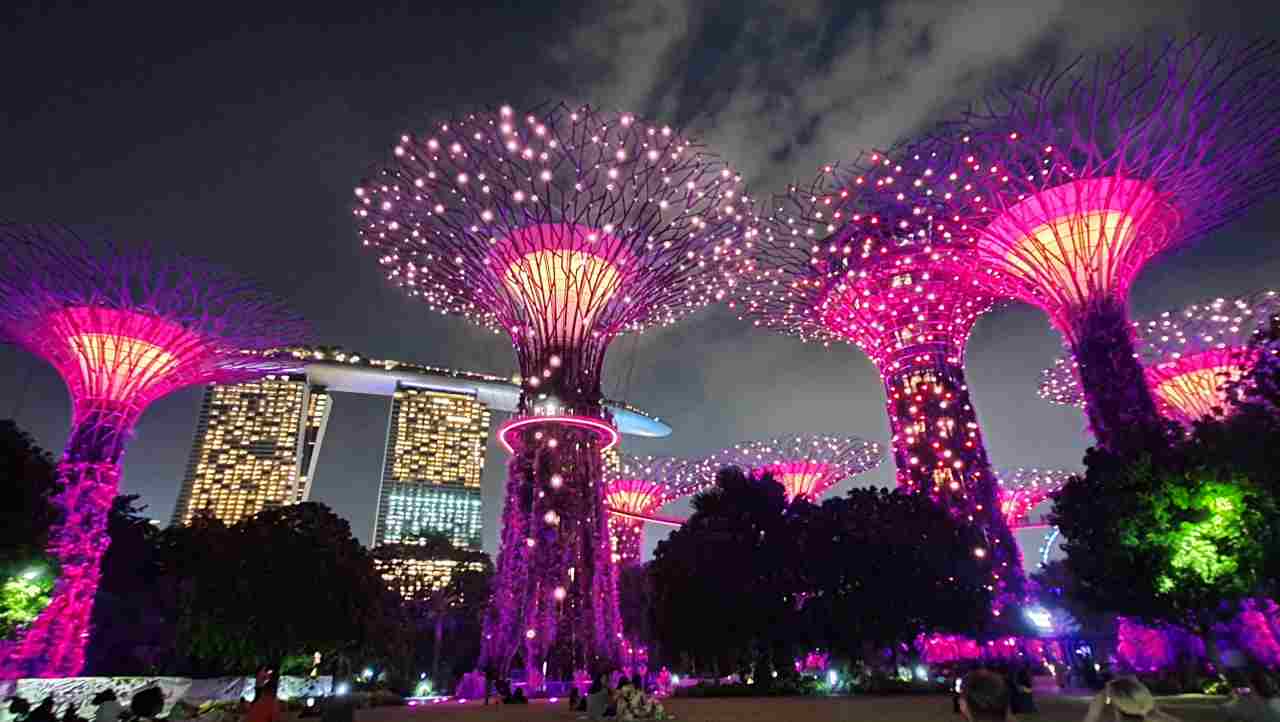
In the evening, the Supertrees are illuminated and come alive with the Garden Rhapsody Light and Sound Show, a magical light and music show that happens twice a day at 7:45 pm and 8:45 pm. It’s one of the best free things to do in Singapore.
I recommend visiting Gardens by the Bay in the afternoon – you can escape the heat in the cooled conservatories, watch sunset from the top of Marina Bay Sands Hotel, and then return to the gardens to marvel at the Supertree Grove illuminated at night and watch the sound and light show. Another option for sunset is the skyway through the supertree grove.
Evening – Marina Bay Sands

If you’re staying at the famous Marina Bay Sands Hotel then sunset is the best time to swim in the largest rooftop infinity pool in the world and enjoy the stunning views over the Singapore skyline and bay. (Note that the famous infinity pool is exclusively reserved for hotel guests.)
If your budget doesn’t stretch to staying at this iconic hotel you can still enjoy a stroll along the Marina Bay waterfront and go up to the Marina Bay Sands SkyPark Observation Deck on the 56th floor where you’ll enjoy amazing 360 degree views from the front of the gigantic boat-shaped structure. Sunset is the best time to go so make sure you book your time slot in advance.
Wrap up your first day in Singapore with a sound and light show. Either return to Gardens by the Bay for the Garden Rhapsody performances (7.30 and 8.30 pm) which light up the Supertree Grove with dazzling illuminations synchronized to music for a magical experience.
There’s also the Spectra sound and light show in front of the Marina Bay Sands Hotel. These free shows feature dancing lasers, water jets and art projections against a backdrop of the river and skyline. They happen at 8pm, 9pm and 10 pm every night and last about 15 mins.
Singapore is very safe to explore, even at night, but for complete ease you can join the popular Starry Night Tour for your first night – it includes a river cruise and will get you to the sound and light shows on time.
Depending on your hotel’s location, you can enjoy a late night snack at a local hawker market like Lau Pa Sat which is open 24 hours and head home via the night-illuminated Merlion.
Day 2: Sentosa Island and Universal Studios
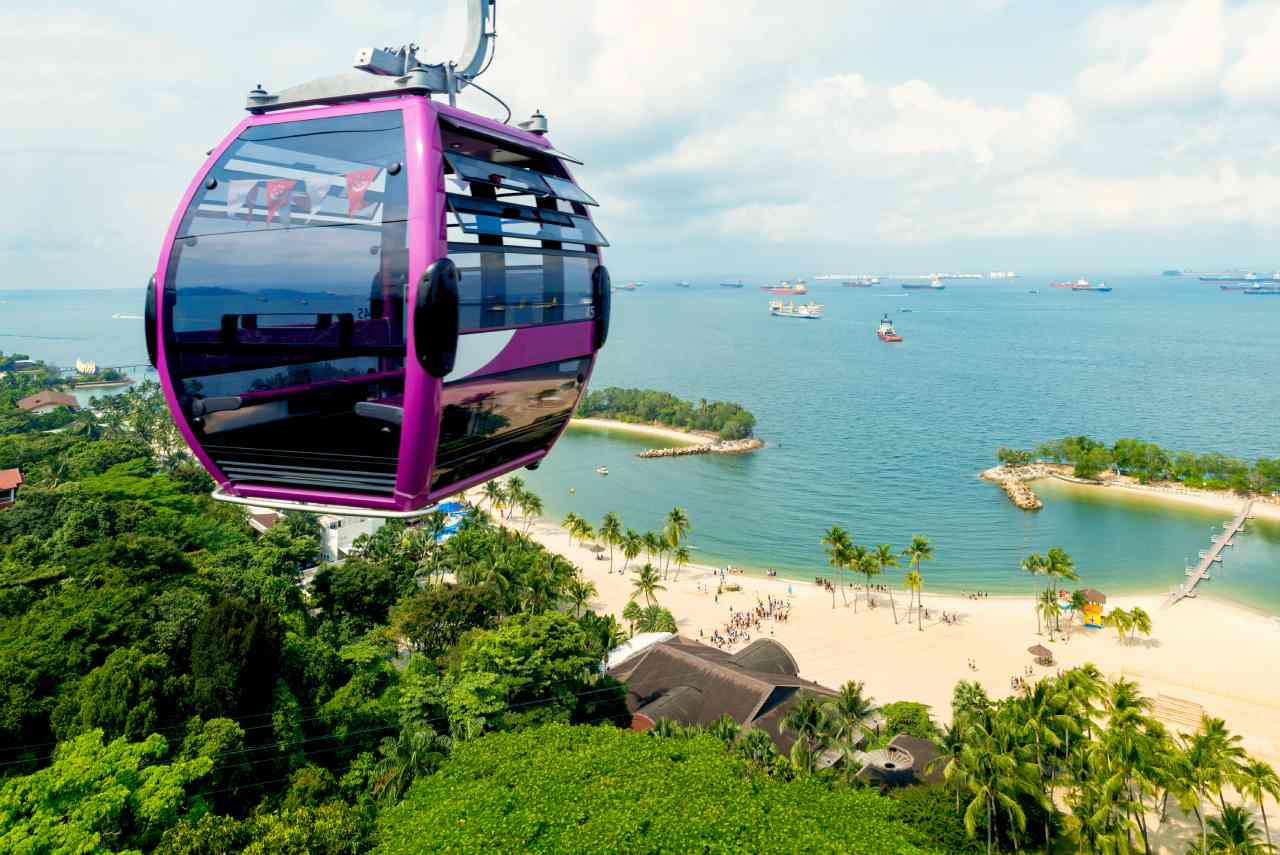
Spend your 2nd day in Singapore at Sentosa. This island is one of Singapore’s top attractions because it’s packed with things to do – from theme parks, aquariums and museums to beaches, resorts and adrenaline-pumping activities.
There’s several ways to reach Sentosa island – the most fun and scenic route is to take the Singapore cable car from Mount Faber. The views along the way are fantastic – you’ll glide over lush forests and the azure water, past skyscrapers and cruise ships in a glass bottomed gondola before arriving on the island.
If you’re on a budget, you could also take the MRT to Harbour Front station and VivoCity then catch the Sentosa Express monorail or walk across the boardwalk to the island.
Once on Sentosa island there’s so many attractions and things to do that you could easily spend a few days here and still not have time to experience everything – so you’ll need to narrow it down and choose only the attractions that interest you the most.
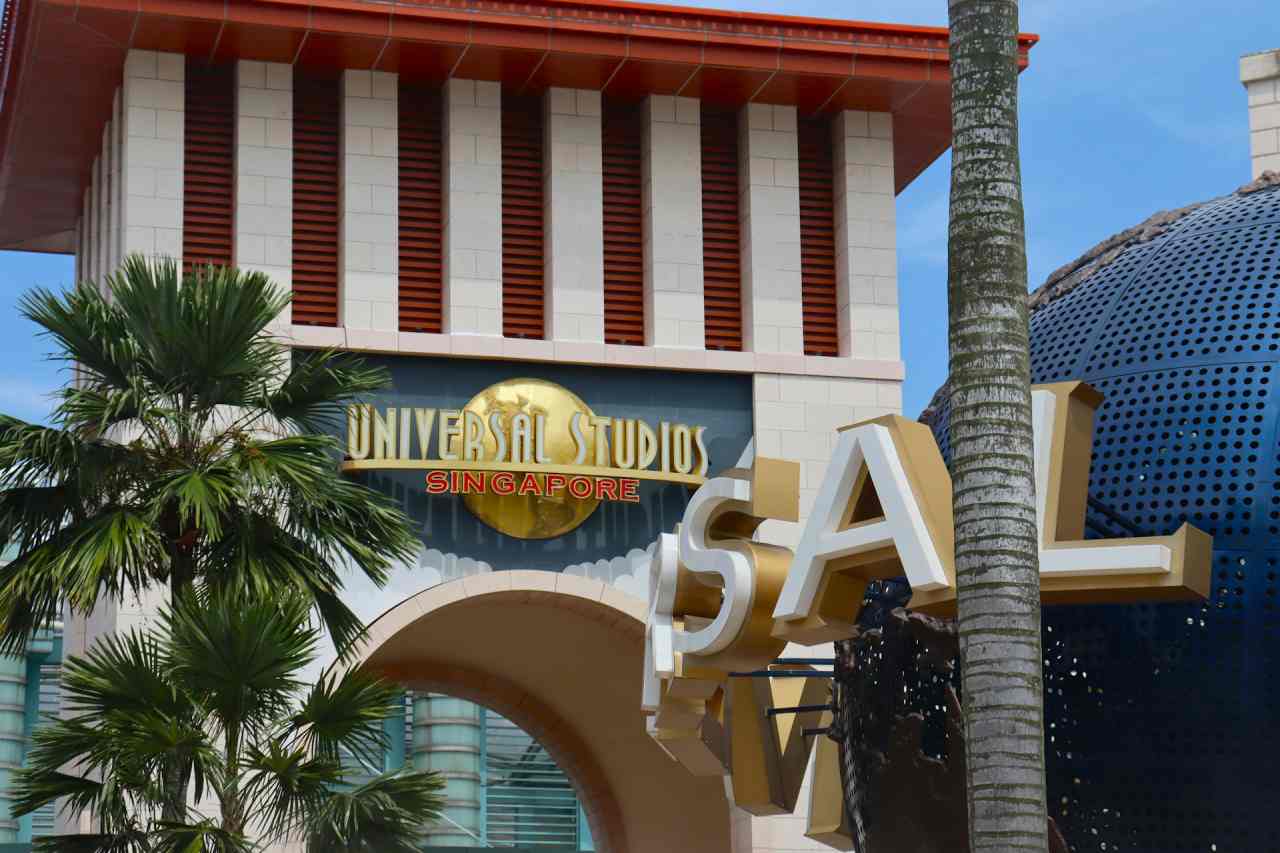
If you’re up for thrills and excitement, head straight to Universal Studios Singapore, Southeast Asia’s first and only Universal Studios theme park. With seven themed zones, you’ll find everything from high-speed rollercoasters to immersive 4D shows, this park delivers a full day of fun. Tickets cost around SGD 79, and queues can get long, so booking in advance and arriving early is a good idea. You can book Universal Studios tickets here.
There’s also an exciting new attraction at Resorts World Sentosa – Harry Potter: Visions of Magic. It’s a temporary indoor art experience that immerses you into the wizarding world through creative multimedia installations.
Right nearby is the Singapore Oceanarium (formerly called the S.E.A. Aquarium) it’s one of the largest aquariums in the world. It’s a beautifully designed space where you can wander through tunnels surrounded by manta rays, sharks, and schools of vibrant fish. With over 100,000 marine animals from across the globe, it’s surprisingly tranquil and a great escape from the heat. Entry is around SGD 41.
If it’s a hot day and you’re in the mood to cool off, Adventure Cove Waterpark is another fun option. There’s a wave pool, lazy river, waterslides, and even a snorkeling lagoon where you can swim alongside colourful reef fish. It’s great for both kids and adults, and it’s open daily from 10am to 5pm (entry is SGD 39).
But if you’re more into relaxing than adrenaline, Sentosa also has some lovely beaches. Palawan, Siloso, and Tanjong Beach each offer a different vibe. Palawan is family-friendly and has a suspension bridge that leads to the “southernmost point of continental Asia,” Siloso is livelier with beach bars and water sports, while Tanjong is more laid-back and peaceful. All of them are free to access and easy to walk between.
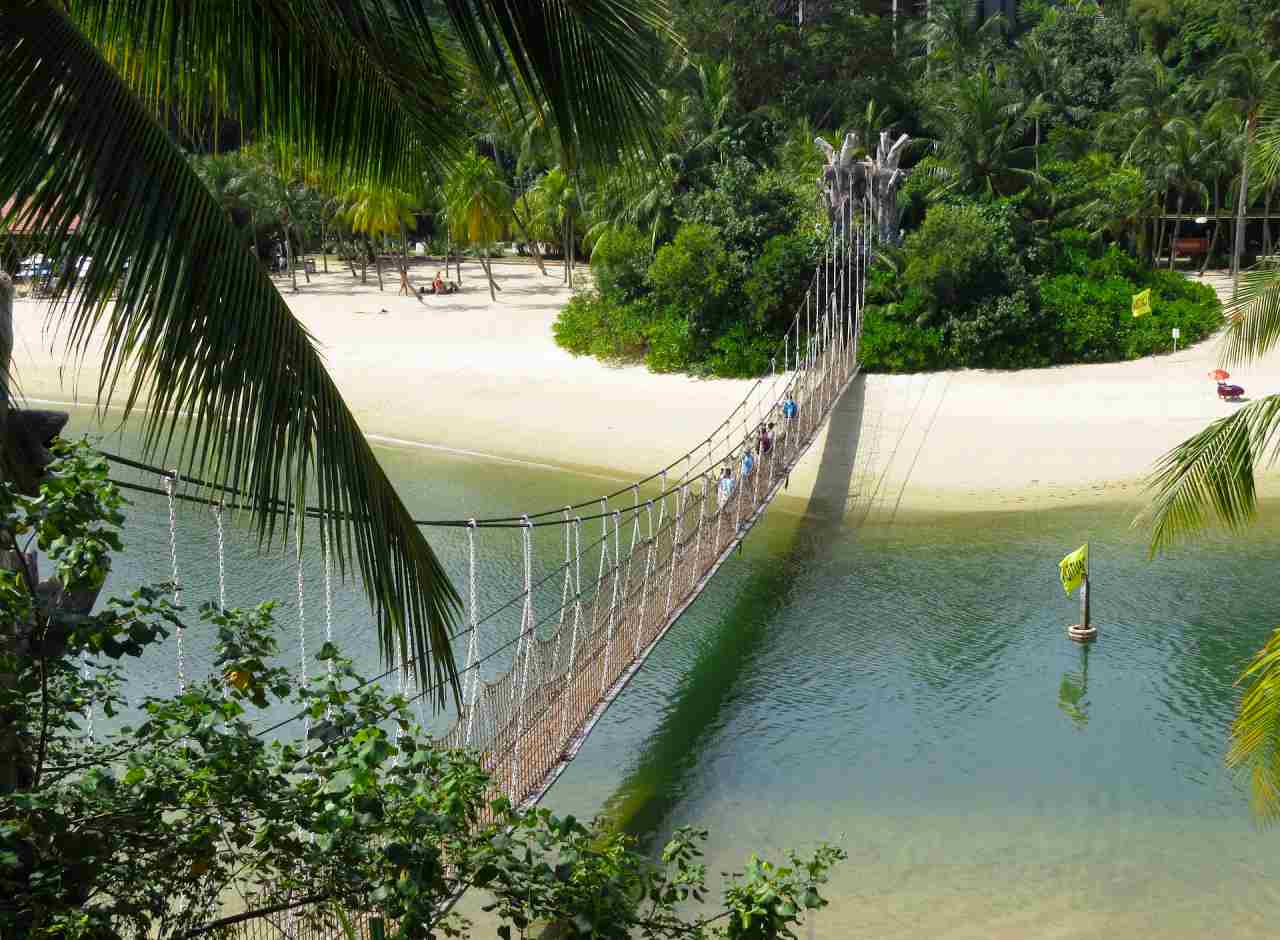
For a bit of history, make your way to Fort Siloso, a preserved coastal fort that played an important role in Singapore’s WWII history. You can walk through underground tunnels, climb up to panoramic viewpoints, and learn about the island’s military past through interactive exhibits. Entry is free, and there’s also a guided walking tour that includes food tasting if you want to go deeper into the story.
If you’re travelling with kids, or if you just enjoy quirky fun, check out the Skyline Luge, where you take a chair lift up and then race down a track on a gravity-powered cart, or visit Madame Tussauds Singapore to snap photos with life-like wax figures of celebrities, sports stars, and historical icons. Both are great for light-hearted fun, with tickets starting at around SGD 25 and SGD 42 respectively.
For a real rush of adrenaline check out iFly Singapore – one of the world’s largest indoor skydiving wind tunnels. It gives you the experience of skydiving without having to jump out of a plane – perfect if you want to feel the rush in a controlled setting. Prices start at SGD 89.
You can also zipline above the jungle and beach at Mega Adventure Park, or take in the panoramic views from SkyHelix, an open-air rotating gondola that lifts you into the sky for 360-degree views over Sentosa and the city skyline.
For something a bit more creative, Trick Eye Museum is an interactive art gallery where optical illusions come to life through clever 3D paintings and augmented reality effects. It’s a fun, offbeat stop for photo lovers. And if you’re into multi-sensory experiences, Sentosa 4D Adventureland combines motion rides, sound, and special effects to immerse you in action-packed mini-movies.
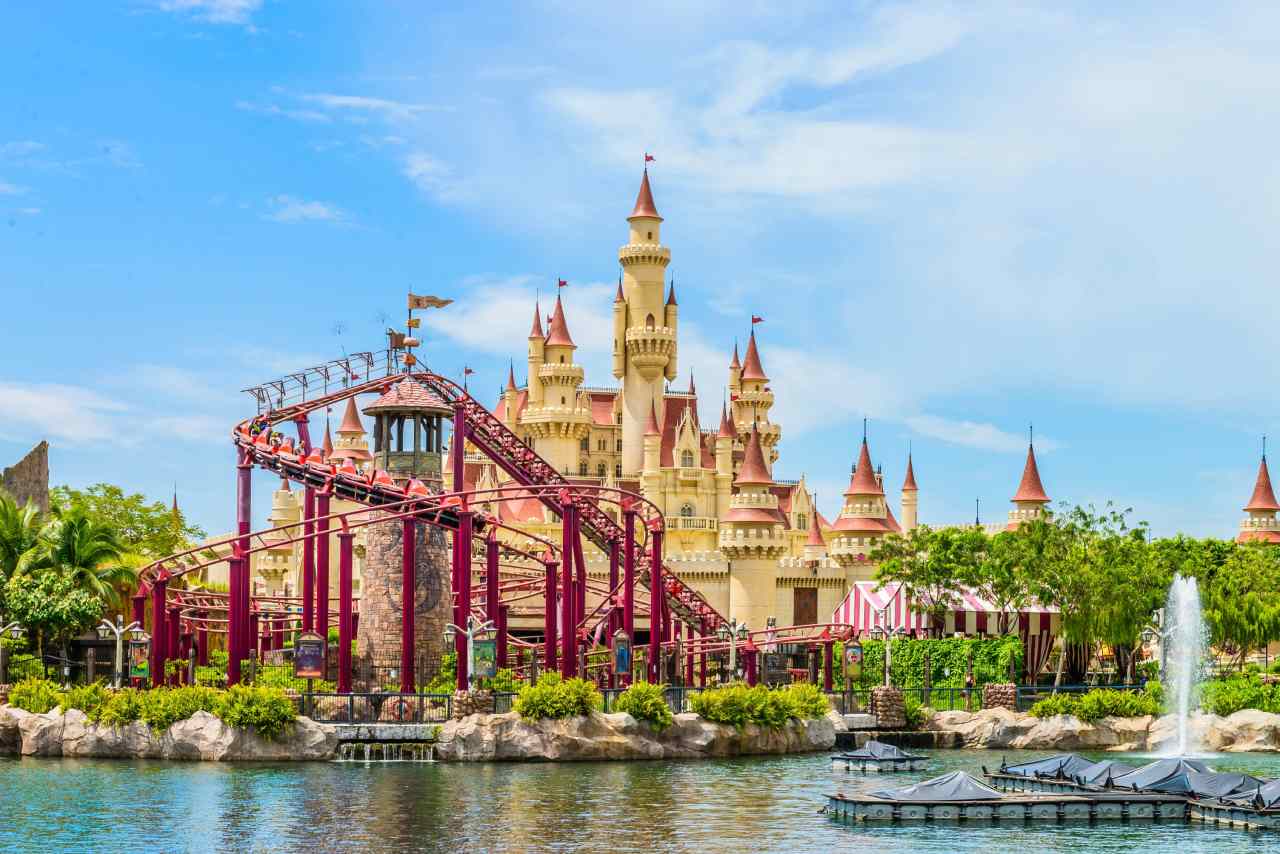
There are plenty of places to eat on Sentosa so you can stay all day and enjoy dinner and a relaxed evening on the island, whether you’re in the mood for a casual meal or something a bit more special. The Good Old Days Food Court is a convenient and affordable option near the beach with local favourites, while The Cliff offers a more upmarket experience with a view.
If you’re in the mood for some entertainment after dinner, try to catch Wings of Time, a multi-sensory night show set against the open sea with lasers, water jets, fire effects, and a dramatic soundtrack all choreographed into a story told with light and sound. It’s a classic Singapore experience and tickets are reasonably priced.
If you’re short on time or feeling tired, the easiest way back is to take the Sentosa Express back. Alternatively, you can ride the cable car back to Mount Faber and enjoy the sparkling night time skyline and have dinner at Arbora, a lovely hilltop garden bistro right next to the Mount Faber cable car station with amazing views.
Day 3: Singapore Zoo and Night Safari
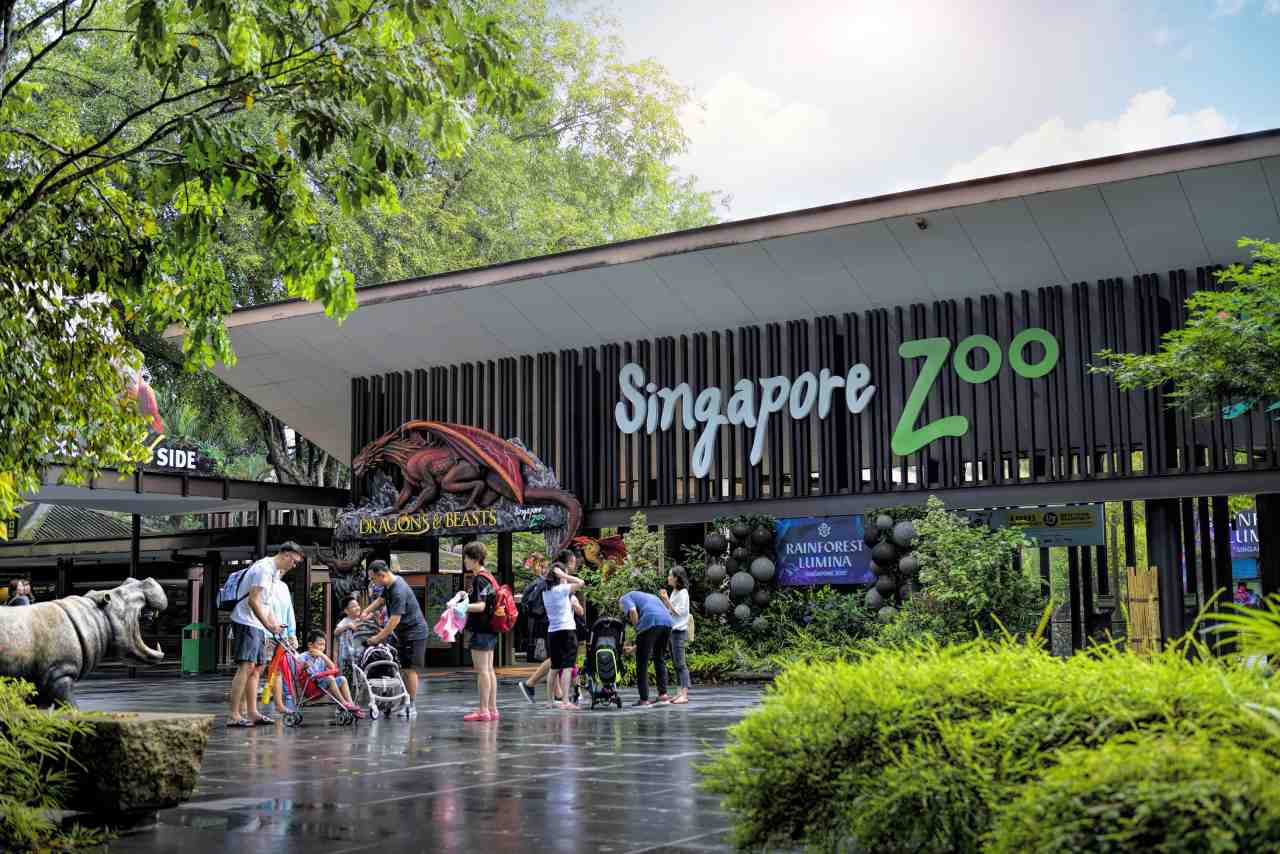
If you love nature and wildlife then spend your 3rd day in Singapore at The Mandai Wildlife Reserve, a collection of world-class wildlife parks nestled beside a reservoir and rainforest that has become a major eco-tourism hub. There’s so much to do there that you’ll need a full day if you want to experience it all.
Morning – Singapore Zoo
This is where you’ll find another of Singapore’s most famous attractions – Singapore Zoo. Set in a beautifully landscaped rainforest environment, this award-winning zoo is home to over 4,200 animals and is considered one of the best in the world for its open-concept enclosures that mimic natural habitats. It’s not just for kids – Singapore Zoo is genuinely one of the most impressive and ethically-run wildlife parks in the world.
Start your day early with one of Singapore’s most unique and memorable experiences – breakfast with orangutans at Singapore Zoo. The “Breakfast in the Wild” experience takes place in a lush garden setting where you’ll enjoy a buffet breakfast surrounded by tropical greenery.
The real highlight, though, is the opportunity to share this space with a family of orangutans who come down from their enclosure during breakfast. It’s a rare and heartwarming chance to observe these intelligent and gentle animals up close in a setting that’s both respectful and enriching for the animals.
After breakfast, spend the rest of the morning exploring the zoo’s spacious and thoughtfully designed habitats. The Zoo is set within the Mandai rainforest, so walking through it feels more like a nature experience than a traditional zoo visit.
You’ll encounter everything from elephants, rhinos, and giraffes to white tigers, reptiles, and a rich variety of birds and primates. There are optional feeding sessions and keeper talks throughout the morning if you want to learn more about the animals and their conservation. Just make sure to check the schedule when you arrive so you can plan your route accordingly. There’s plenty of places to eat lunch in the zoo too.
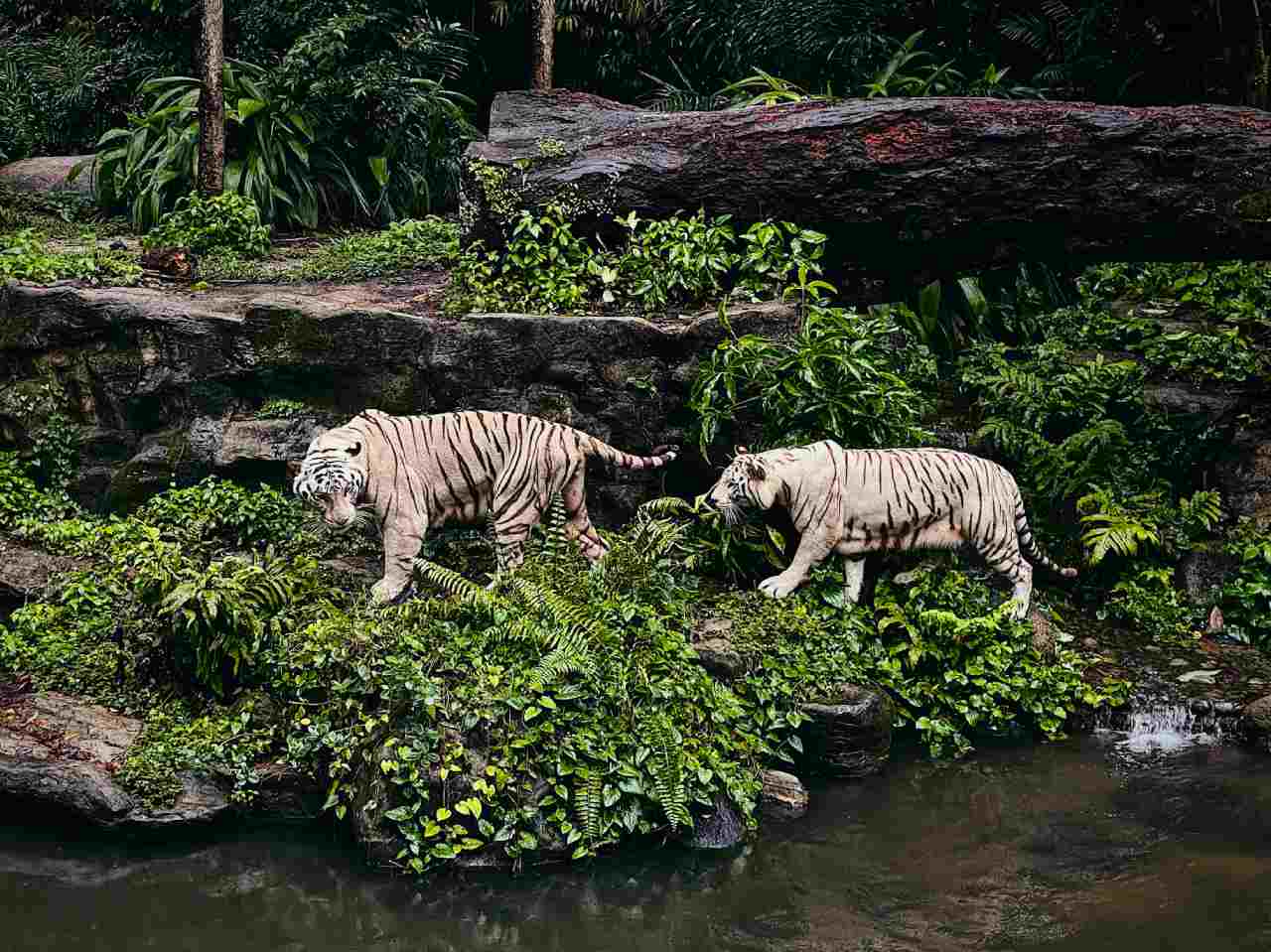
Afternoon – River Wonders and Bird Paradise
Next door is River Wonders, a river-themed wildlife park focused on the world’s major freshwater ecosystems. One of the best parts is the Amazon River Quest, a gentle boat ride that winds through a recreation of the Amazon rainforest.
Along the way, you’ll spot creatures like jaguars, giant anteaters, capybaras, and manatees. Don’t miss the Giant Panda Forest, where you can see Singapore’s resident pandas, Le Le and Jia Jia, snoozing or munching on bamboo in their cool, air-conditioned enclosure.
Also worth visiting is Bird Paradise, one of the newest and most impressive aviaries in Asia. This open-concept park is home to over 3,500 birds across eight expansive walk-through habitats that recreate ecosystems from around the world.
Wander through the wetlands of Southeast Asia, the bamboo forests of China, and the misty cliffs of South America, where vibrantly coloured toucans and macaws swoop through the air above you. The whole experience is immersive and thoughtfully designed and there’s a good chance you’ll see birds you’ve never even heard of before.
Each attractions requires a separate ticket so if you’d like to visit them all you can save money with a 3 Park Explorer Pass or Wildlife Pass.
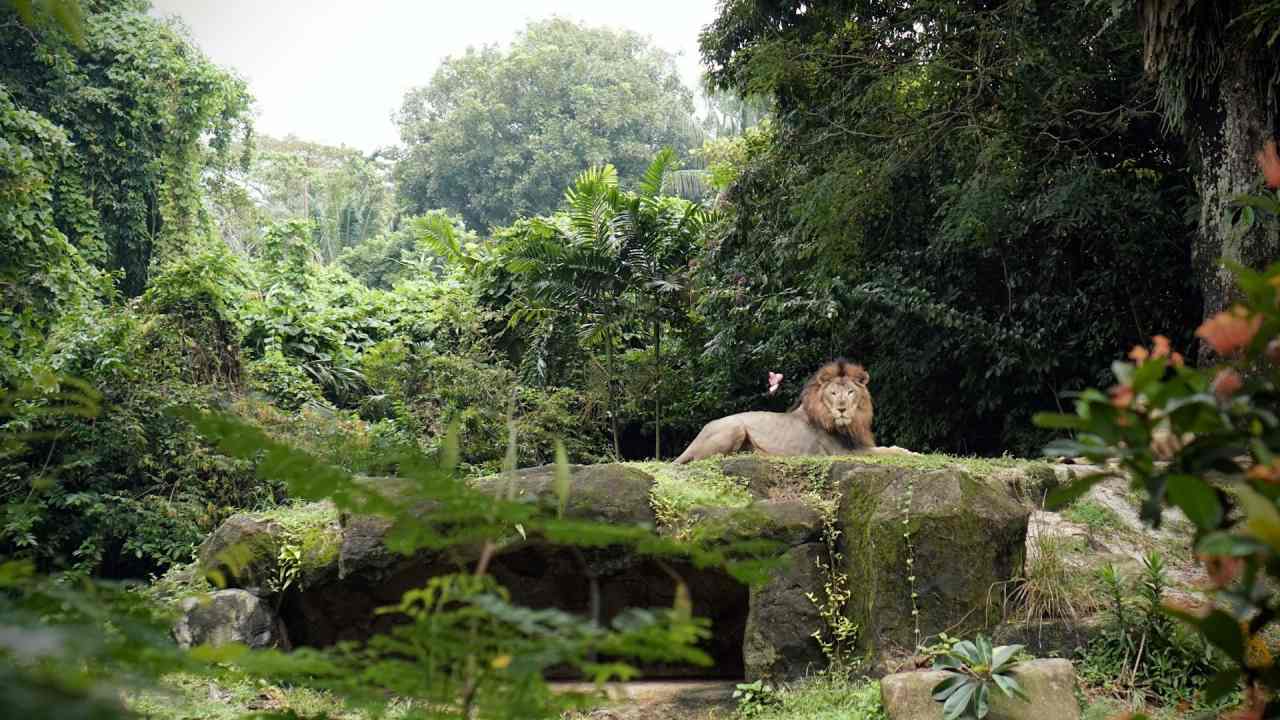
Evening – Night Safari
The Night Safari is one of Singapore’s most iconic experiences and for good reason. Opened in 1994 as the world’s first nocturnal wildlife park, it lets you explore rainforest trails and animal enclosures under the cover of darkness.
The lighting is dim and naturalistic, creating an atmosphere that’s a little mysterious, a little magical. You’ll see nocturnal animals that are usually asleep during the day, like leopards, civets, fishing cats, Tasmanian devils, and even the elusive Malayan tiger.
If you’re feeling tired after a long day you can take the tram that loops through the park’s six geographical zones and see which nocturnal animals you can spot. it’s worth booking in advance, especially on weekends. You can get Night Safari tickets here.
Mandai is located about 30 minutes north from downtown Singapore but there’s plenty of ways to get there. The easiest is by shuttle bus, the Mandai City Express picks up from various points. You can also get a convenient Singapore Zoo Combo Package with entrance tickets and hotel transfers included.
Day 4: Shopping, Museums and Parks
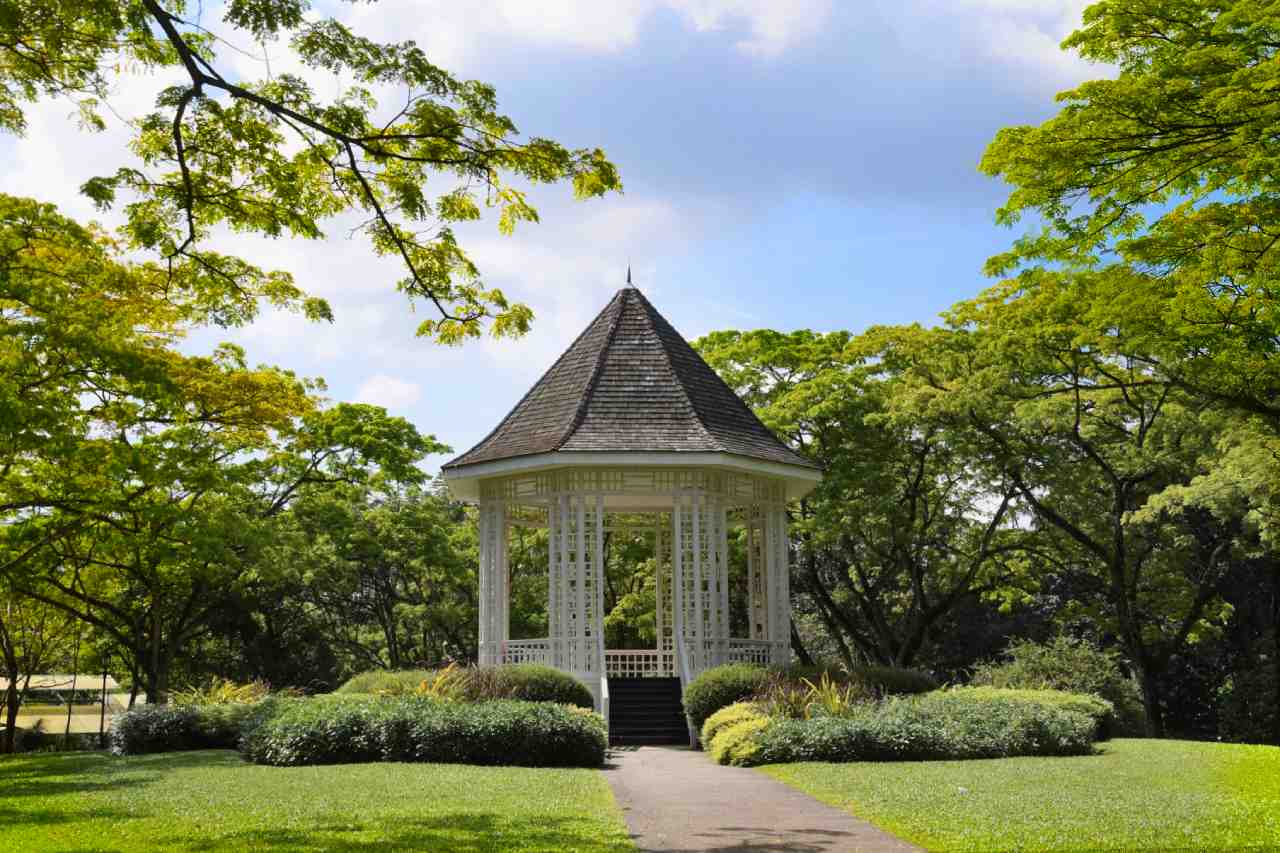
Morning – Singapore Botanic Gardens and Orchard Road
If you are planning a 4 day Singapore itinerary then you have enough time to go beyond the popular tourist attractions and get a better glimpse into the day to day life and soul of this fascinating city.
Singapore might be known for its futuristic skyline, but just a short walk from the city’s buzz, you’ll find yourself surrounded by tropical greenery and serene lakes at the Singapore Botanic Gardens. This UNESCO World Heritage Site is a peaceful way to start the day, especially if you grab a coffee and croissant from Bee’s Knees before heading in. If you’re feeling hungry, Fusion Spoon nearby has a great selection of local and international dishes in a relaxed garden setting.
The botanical gardens themselves date back to 1859 and are filled with lush lawns, forest trails, and peaceful corners to explore. Swan Lake, with its resident swans and water features, is a popular photo spot, and the National Orchid Garden is a must – this colourful floral showcase has over a thousand orchid species in beautifully landscaped displays. If you’re visiting with kids, the interactive Lake Como Adventure Grove is a fun stop, while the Seed Bank, housed in a colonial-era building, gives a glimpse into the conservation work being done here.
After wandering around the botanic gardens, you can cool off at the Museum of Ice Cream. It’s pastel pink, quirky, nostalgic, and unapologetically sweet. Get tickets from the official site (or slightly cheaper on Klook) which include unlimited ice cream and entry to a series of photo-friendly rooms like a “sprinkle pool,” rainbow tunnel, and mirrored infinity room. It’s a sweet and playful break from the heat and yes, ice cream before lunch is fine – you’re on holiday!
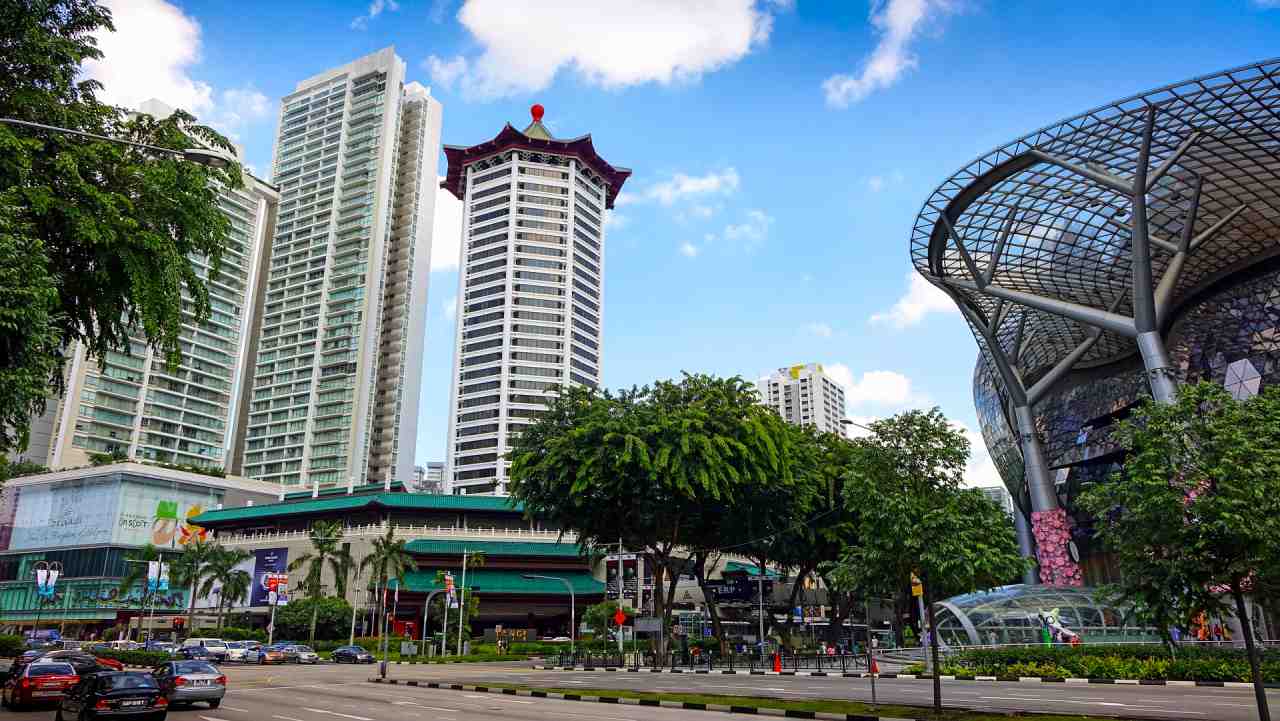
Next head to Orchard Road, Singapore’s legendary shopping boulevard. This dazzling street stretches from near the Botanical Gardens to Dhoby Ghaut and Raffles in the eastern part of the city. It’s more than just a strip of prestigious shopping malls, hotels and restaurants, though there are plenty of those too.
From the glitzy global brands inside Paragon and ION Orchard, to the quirky, time-warp vibe of Lucky Plaza and Tang’s Plaza, a picturesque Mandarin-style mall with shops and abundant food, there’s a real mix here.
However, if you’re looking for bargains instead of luxury brands, you’ll want to head to the famous Mustafa Centre in Little India. This is a multi-level department complex that offers bargains and discounts on just about everything, including electronics, clothing and cosmetics.
Even if you’re not a shopper, it’s worth walking the length of Orchard just to soak up the energy. You can head up to the ION Sky observatory for panoramic views of Singapore from 56 floors above or explore Design Orchard if you prefer local, indie brands.
You could take a small detour off Orchard Road to explore the colourful restored Peranakan shophouses and atmospheric bars on Emerald Hill.
The shopping malls all have food courts offering a diverse range of dishes, but if you’re up for something with more vibe head to Newton Food Centre instead – just a short ride away, this is one of Singapore’s most famous hawker centres.
Newton Food Centre is loud, chaotic, and full of mouthwatering smells. Grab a table and try a few dishes—Hainanese chicken rice, spicy chili crab, or smoky satay skewers grilled right in front of you. It’s the kind of place where locals eat, and the prices are refreshingly affordable.

While you’re in this area you could also check out the famous and historic Raffles Hotel a 5-star hotel housed in a grand colonial house that dates back to 1888. Raffles has hosted some of the world’s most elite guests, including royalty, and its service and amenities cater to such elevated tastes.
Even if you can’t afford to stay here why not treat yourself to a spot of lunch or afternoon tea at The Grand Lobby or a Singapore Sling cocktail at the The Long Bar – the birthplace of the famous drink and soak up the olde world atmosphere.
Afternoon – Shops, Museums and Galleries
Either spend the afternoon indulging in some of Singapore’s finest retail therapy, or, if you’re more interested in history and culture than shopping, you’ll find several interesting places nearby.
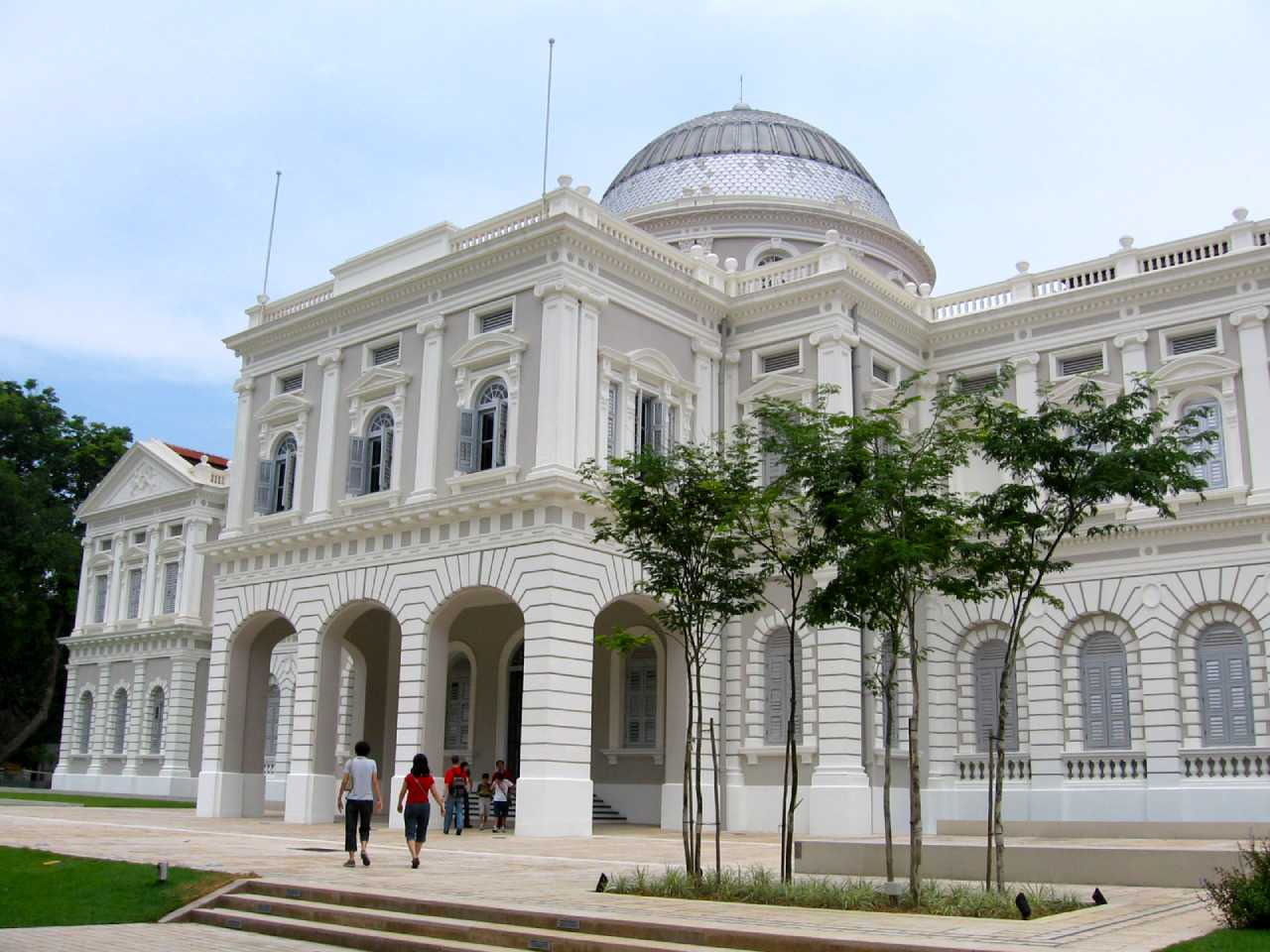
There’s also several world class museums and galleries, including the National Museum of Singapore and the National Gallery Singapore, near Fort Canning Park.
The National Museum of Singapore (SGD $11) covers city’s past – from Sir Stamford Raffles, through world wars, and independence from Malaysia. It teaches how the island nation quickly transformed from a humble fishing village to one of the world’s busiest ports and global financial centers to become the thriving, world class metropolis it is today.
Nearby, The Peranakan Museum tells the story of the unique culture of the Peranakans or Straits Chinese through interactive and multimedia exhibits. Across the road you’ll find The National Gallery Singapore which displays modern Southeast Asian art in a historic building, and The Asian Civilisations Museum that explains how Asian history and cultures shaped contemporary Singapore.
These museums are all within walking distance of each other and well worth a visit. If you want to enter several museums get the Singapore museum pass to save money.
Evening – Clarke Quay
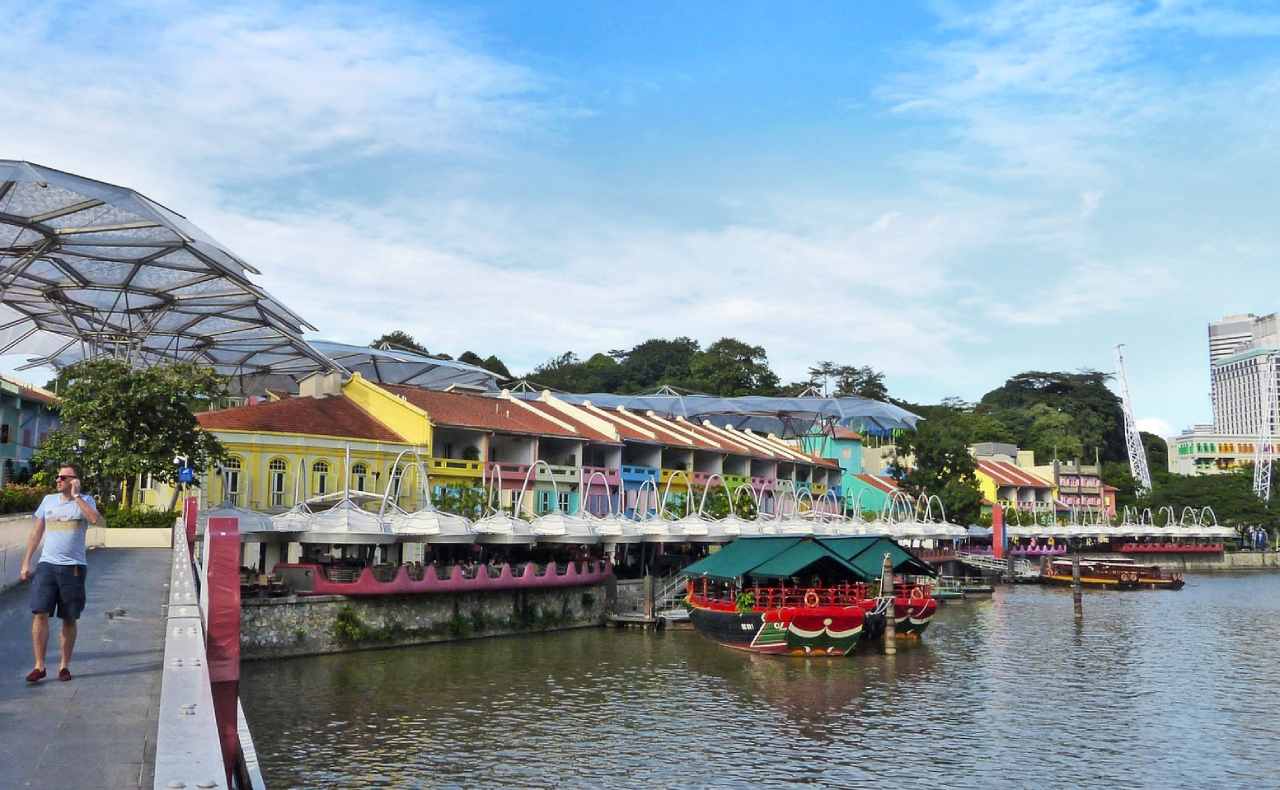
As evening falls, head down to Clarke Quay, one of the city’s most atmospheric riverfront areas. Once a series of colonial warehouses, it’s now a lively dining, entertainment and nightlife district lit with colourful lights casting neon reflections on the water.
You can grab dinner here in one of the many restaurants, like Tomo Tokyo for great Japanese cuisine, and bars where you can unwind with a drink by the river. There are also some music establishments (like Warehouse Bar), green spaces, and even a nature park at nearby Raffles Garden. It’s a great spot to relax and watch the city lights at night.
From Clarke Quay you can also hop aboard a scenic Singapore river cruise to see the skyline glittering at night from the water, or see what’s on at the nearby Victoria Theatre and Concert Hall to enjoy world class artists and performances in vintage architecture.
Day 5: Off Beat Adventures and Hidden Gems
There’s so many things to do in Singapore that you won’t be able to fit everything into 5 days or even a week’s itinerary.
So for your final day in Singapore, here’s some options to choose from whether you want to dive more into Singapore’s unique culture and world class museums or head off the beaten track to explore the nature and surrounding smaller islands.
Option 1: Katong – Joo Chiat and East Coast Park
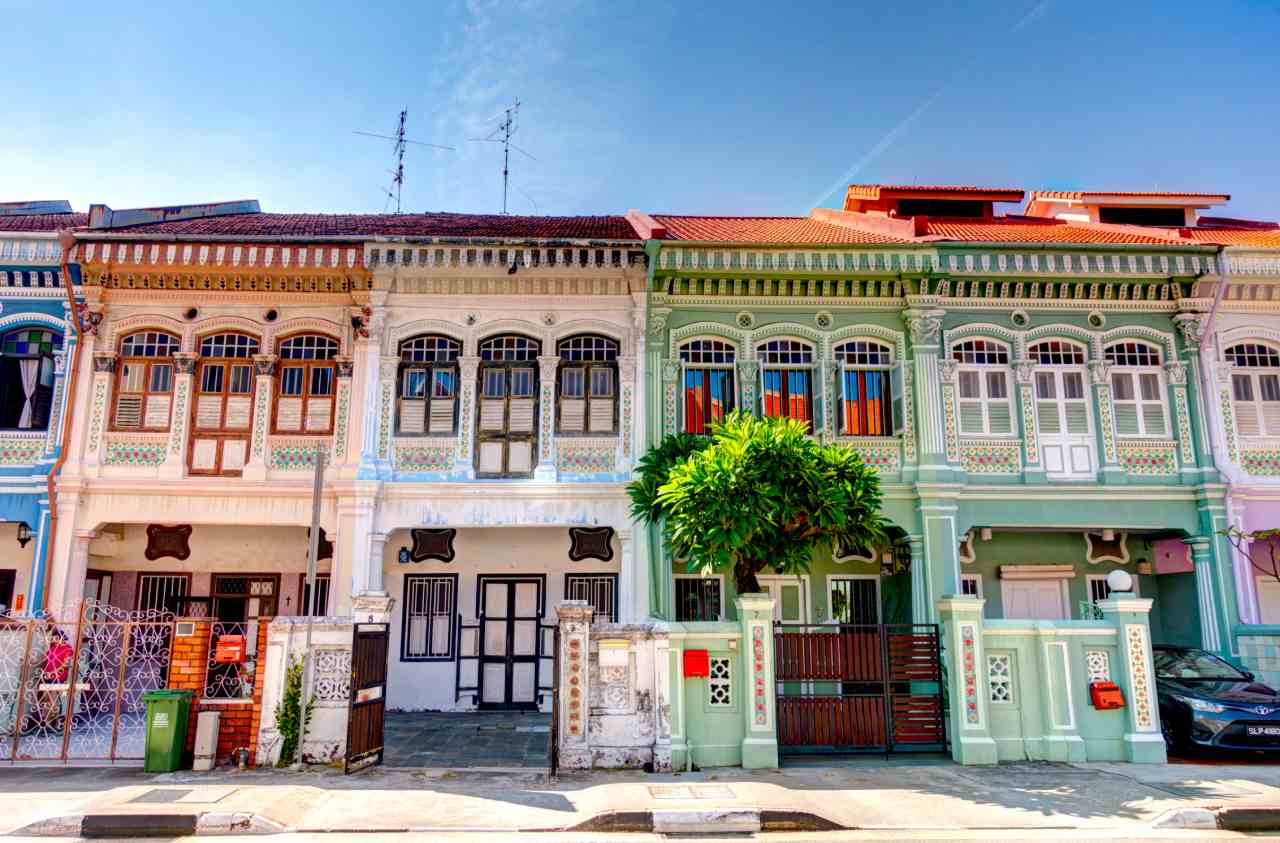
If you’d like to explore more of Singapore’s colourful and unique Peranakan culture head to the Katong – Joo Chiat neighbourhood.
Begin with a typical Singaporean breakfast of kaya toast (toasted bread with coconut jam and butter), soft-boiled eggs, and kopi (coffee) at Chin Mee Chin Confectionery – a retro Hainanese bakery with marble tables, tiled floors, and old-school vibes.
Then wander down Koon Seng Road, one of the most photogenic streets in Singapore with its row of colourful pastel hued Peranakan shophouses. Continue exploring Joo Chiat Road and East Coast Road, popping into small boutiques, old-school provision shops, and hidden temples. For lunch, there’s plenty of Peranakan foodie delights to discover making this the perfect area for a food crawl.
Also worth a visit is The Intan, a private Peranakan home museum. The owner Alvin will walk you through the collection, complete with tea and kueh (traditional sweets) but you need to book in advance.
Walk (or take a short taxi) down to East Coast Park. Rent a bike or simply stroll along the breezy, tree-lined promenade with views over the Singapore Strait. This is where locals come to jog, rollerblade, barbecue, and unwind on the beaches. There’s plenty of places to watch the sunset and grab a bite to eat along the coast and it makes a lovely offbeat way to finish your Singapore trip with a insight into local life.
Option 2: Island Hopping
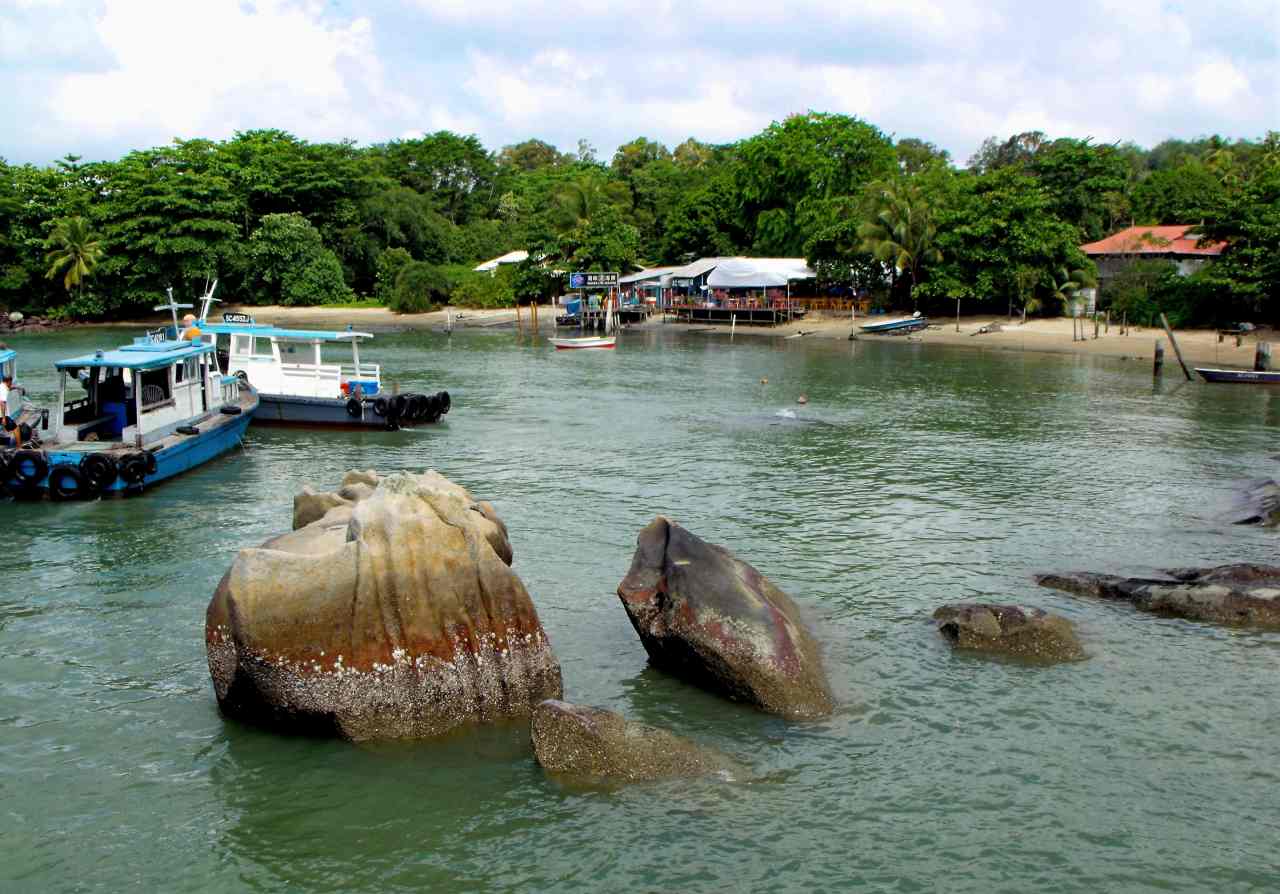
Did you know you can even go island hopping in Singapore!?
If you’d like to see a glimpse of what Singapore used to look like in the 1960’s explore Pulau Ubin, a rustic island northeast of the mainland that is regarded as Singapore’s Last Kampong (traditional village.)
To get to Pulau Ubin, head to Changi Point Ferry Terminal (around 40–50 minutes from the city by MRT + bus or Grab). From here, you can take a bumboat to the island. Boats leave when full (about every 10 people) and cost $4 each way in cash.
Once you arrive on Pulau Ubin you can rent a bike at the pier and spend a few hours exploring along dirt paths, wooden boardwalks, and mangroves, spotting wildlife, kampong houses and shrines scattered through the jungle.
This is one of the most peaceful, non-touristy things you can do in Singapore, but bring water, insect repellent, and some snacks as facilities are minimal. There are a couple of simple seafood eateries near the Pulau Ubin jetty for lunch. Try Season Live Seafood for chili crab, sambal prawns, or fried rice with cold lime juice.
Alternatively, you could spend the day exploring Lazarus Island – one of Singapore’s best-kept secrets. Lazarus Island feels a world away from the skyscrapers and shopping malls, there are no shops, no cars, and no crowds – just soft golden sand, swaying palms, and warm turquoise water.
To get there, take the MRT to Marina South Pier, right next to the Singapore Island Cruise terminal. From here, it’s a short 20-minute ferry ride to St. John’s Island where you’ll land – the two islands are connected by a short causeway. If you have time you can also explore tiny Kusu Island which is home to a beautiful Chinese temple and a tortoise sanctuary as well as some lovely beaches.
Round trip tickets cost around $15 SGD, and it’s worth checking the ferry schedule in advance, as they don’t run frequently throughout the day. Take snacks and drinks (since there’s nowhere to buy anything on the island), then find a shady spot near the beach for a relaxing picnic by the sea.
The beach here is surprisingly pristine, and the island is dog-friendly if you’re travelling with a furry companion. From the shore, you’ll spot container ships gliding in and out of Singapore’s famously busy port—an oddly calming juxtaposition of stillness and movement.
Option 3: Hike the Southern Ridges Trail and explore Haw Paw Villa
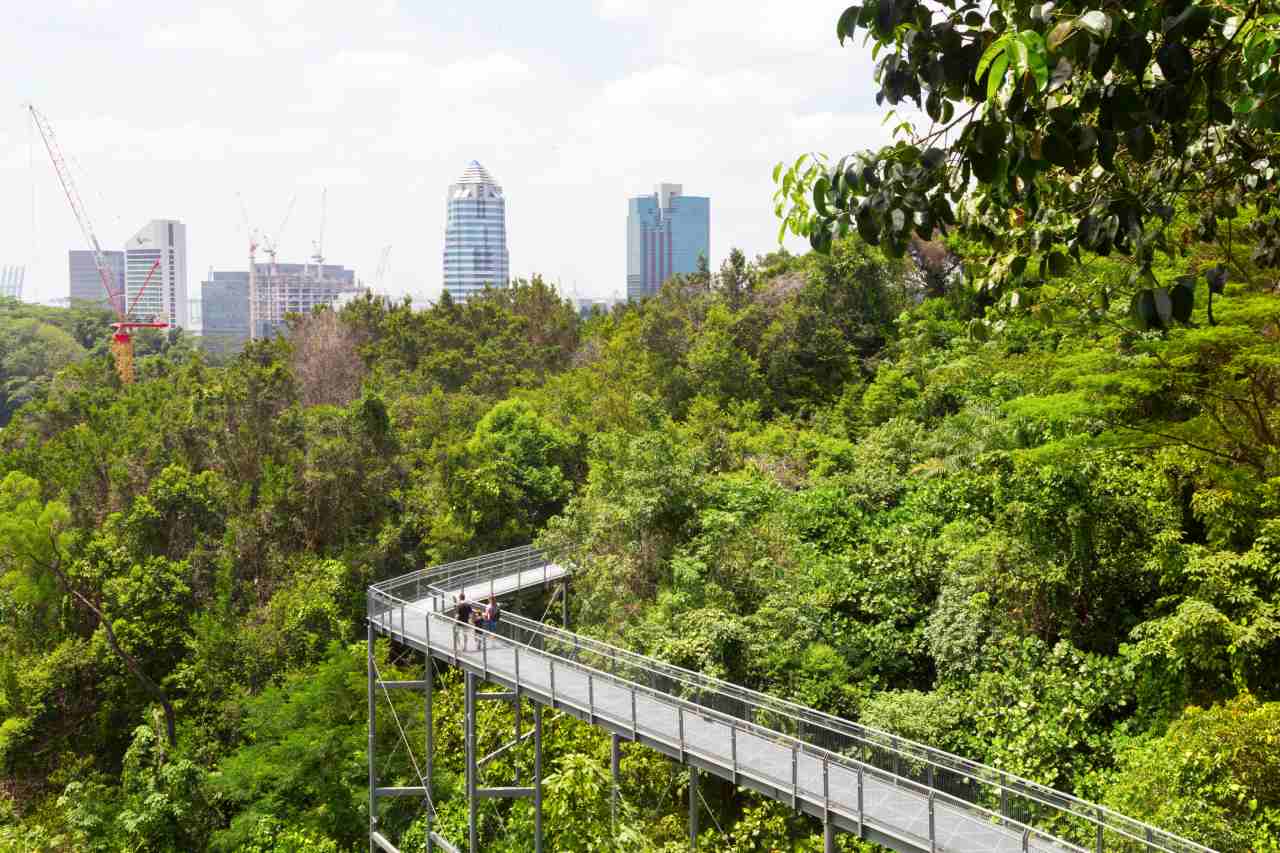
If you’re feeling more active then this is your chance to hike the Southern Ridges Trail – one of Singapore’s most scenic and rewarding urban hikes.
The Southern Ridges Trail is a 10 km trail that connects a string of green spaces across the island’s southern ridge, from Mount Faber to Kent Ridge Park and Labrador Nature Reserve with elevated forest walkways that offer incredible views over the harbour, tropical jungle and skyscrapers.
It takes about 3 – 5 hours to walk the whole trail, depending on your pace, or you can choose a shorter section like Mount Faber to HortPark, or Kent Ridge. The best times to go are early morning or late afternoon to avoid the midday heat. If you time it right, catching sunset from the Henderson Waves bridge is one of the most beautiful ways to end the trail.
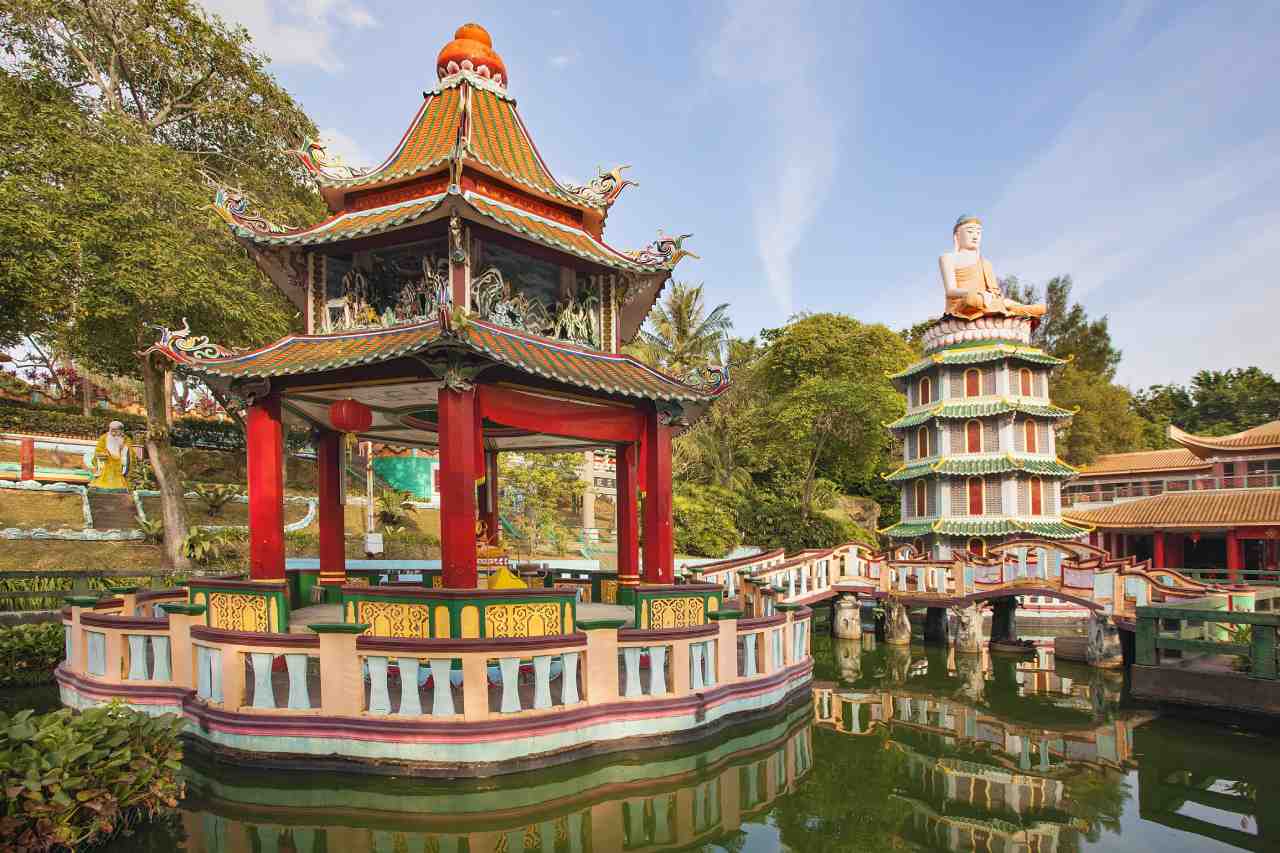
After the hike, why not check out Haw Par Villa nearby. This is a really fascinating quirky, offbeat attraction and one of Singapore’s most unique cultural landmarks.
Haw Par Villa was created in 1937 by the Tiger Balm brothers and is a 8.5‑hectare theme park filled with 1,000+ sculptures and 150 dioramas depicting scenes from Chinese folklore, religion, philosophy and mythology.
Explore the Ten Courts of Hell where you’ll see graphic depictions of moral punishment based on Chinese beliefs and values, and the new Hell’s Museum, the world’s first museum exploring death and the afterlife across various cultures.
Option 4: Singapore Science Centre and Jurong Lake Gardens
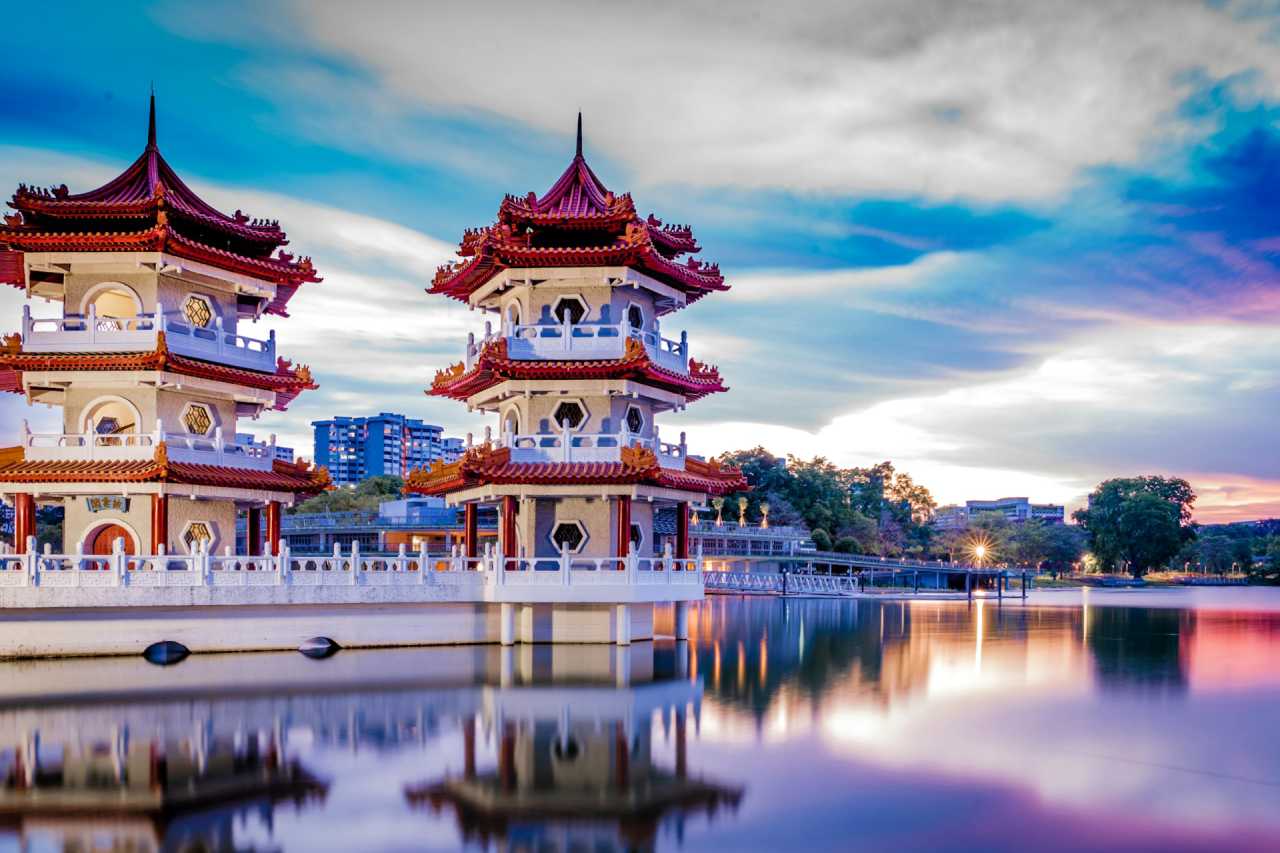
If you are traveling with kids, or just interested in science, then it’s worth heading just out of the city center to the Singapore Science Centre, a long-time educational hub of science and technology.
The Singapore Science Centre is home to numerous interactive exhibits related to Earth, biology and outer space, and a plethora of activities for kids including Snow City Singapore and KidsSTOP a huge indoor play center. The Science Centre tickets cost around SGD$10 for adults / $7 for kids, and is open Tuesday through Sunday, 10am-5pm.
Why not combine your visit with exploring the neighbouring Jurong Lake Gardens. Next to the Science Centre is the exquisite Chinese Garden, and the similarly gorgeous Japanese Garden where you’ll see traditional landscaping, serene ponds and ornate bridges and pagodas.
If you seek respite from the blazing sun, enjoy lunch under the air conditioning at Canopy Jurong Lake Gardens or try the unique and reasonably affordable menu at nearby Eden.
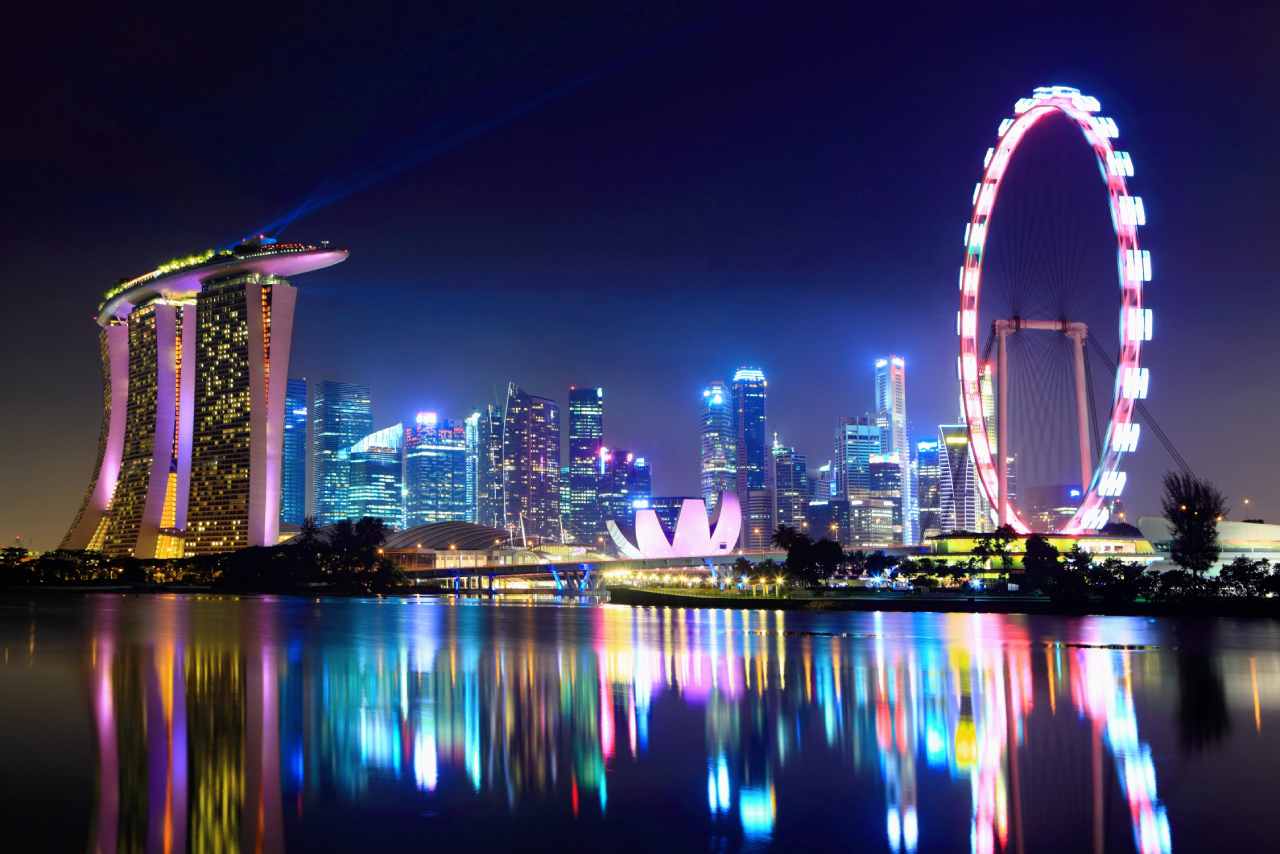
Evening – Marina Bay
For your final evening in Singapore head back to the Marina Bay area to soak in the incredible Singapore skyline one more time.
For dinner, why not head up to Ce La Vie, a fancy rooftop bar, restaurant and lounge on the 57th floor of the Marina Bay Sands for cocktails with a view to toast your last night in this amazing city. Make a reservation first to avoid disappointment.
If you didn’t get a chance already this would be another great time to take a river cruise, marvel at the Gardens by the Bay, ride on the Singapore flyer, or watch one of the sound and light shows again. And if you want to grab some souvenirs or last minute gifts, there are plenty of shops.
Bonus Singapore Tip: Shopping and Tax Refunds
Singapore is considered a shopper’s paradise, with most of the world’s best brands available throughout the city. If you like to shop, it’s good to know that Singapore’s Tourist Refund scheme allows visitors to claim a refund of the Goods and Services Tax (GST) paid on goods purchased from participating retailers.
So make sure you collect your receipts, and claim the GST back at the airport upon departure. These counters are highly visible and efficient, although there can sometimes be a queue during peak periods.

Ready To Plan Your Trip to Singapore?
And that’s it for my Singapore itinerary! Phew – that was a long one!
As you can see, Singapore has a lot to explore! From exploring multicultural neighbourhoods and cuisines to marvelling at the iconic modern landmarks, enjoying family friendly attractions and world class shopping malls, you’ll never get bored in Singapore!
If it’s your first time in Singapore, I highly recommend spending at least 3 days in Singapore – you’ll need that time just to visit the main attractions like Gardens by the Bay, Sentosa Island and Singapore Zoo.
If you have more time then it’s well worth spending 4 or 5 days in Singapore, or even 1 week, so that you can explore the city beyond the tourist attractions, discover the unique culture and try all the amazing food and explore the beautiful parks, islands and natural beauty spots.
I hope you’ve found this blog helpful and that it has inspired you to explore Singapore beyond the obvious attractions. It’s such an inspiring and fascinating city and I hope you enjoy it as much as I did. If you want more information on Singapore check out the Visit Singapore website.
Where Next?
Singapore makes the perfect introduction to South East Asia, but there’s so many more interesting destinations to explore nearby.
If you’re visiting Singapore as part of a longer trip around the region then check out my other travel guides, itineraries and blogs.
You might like:

